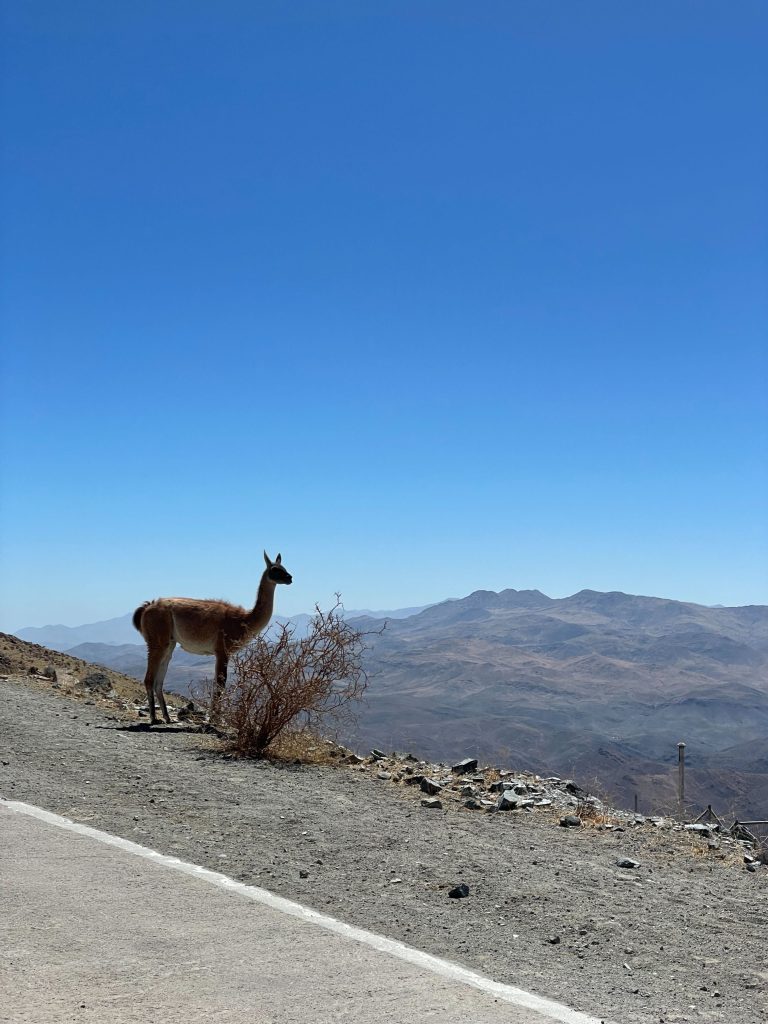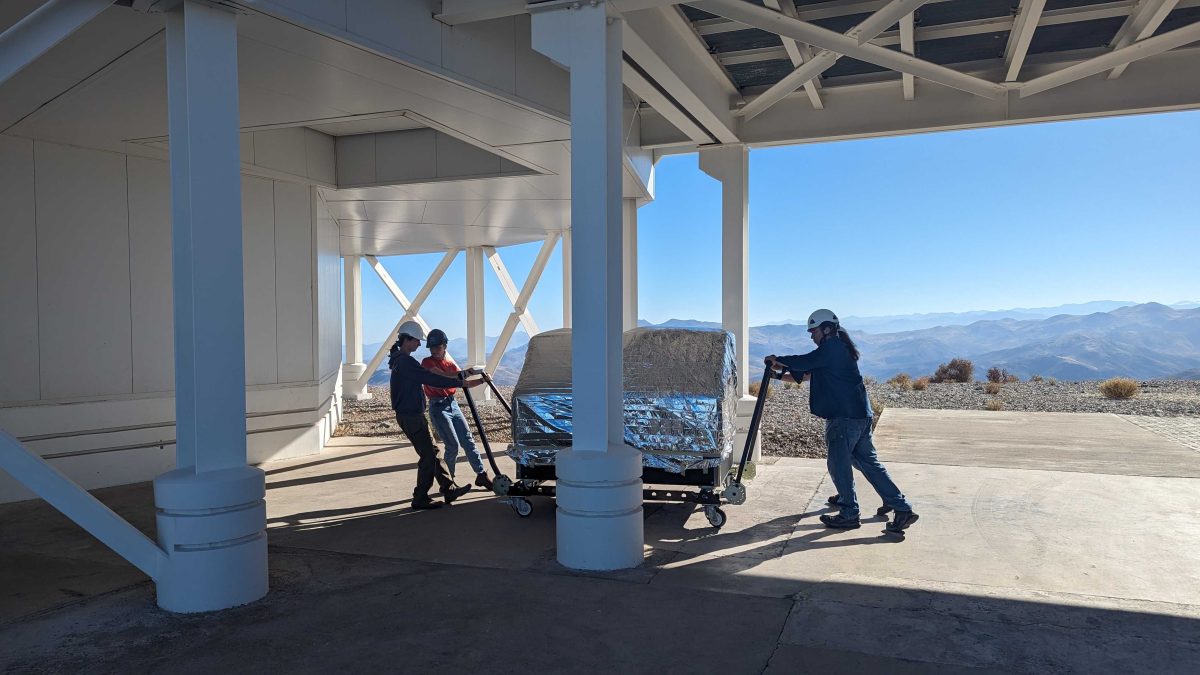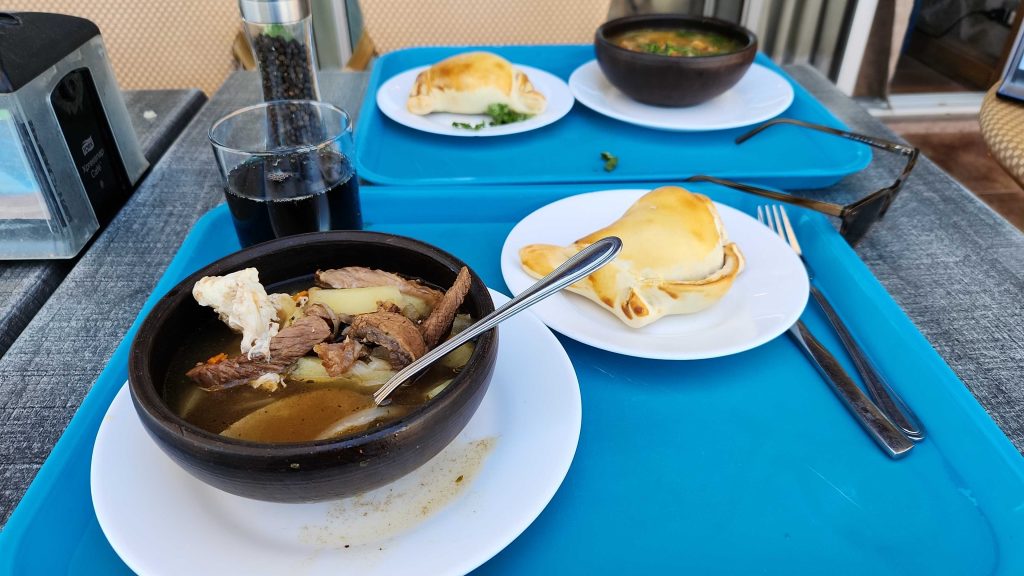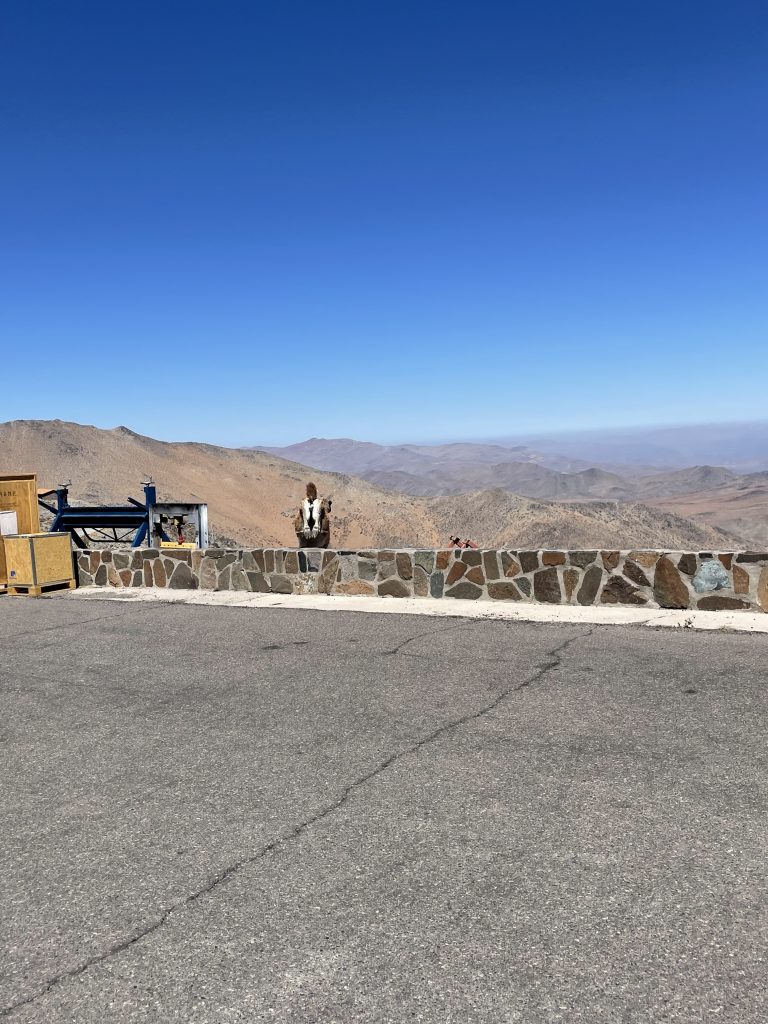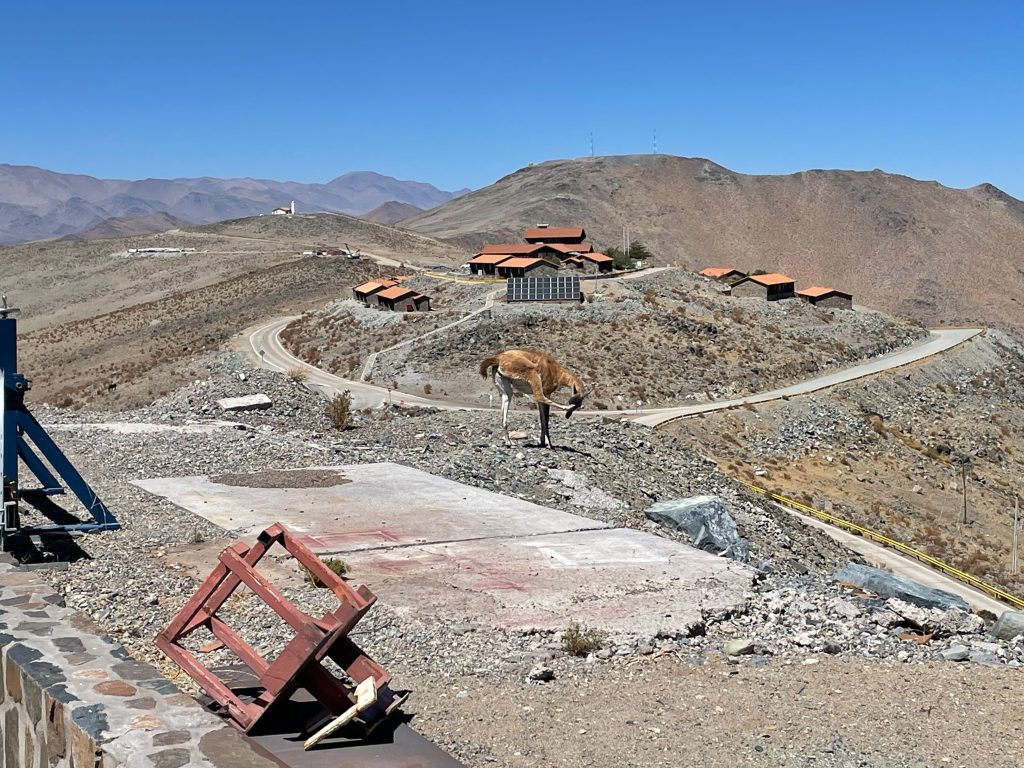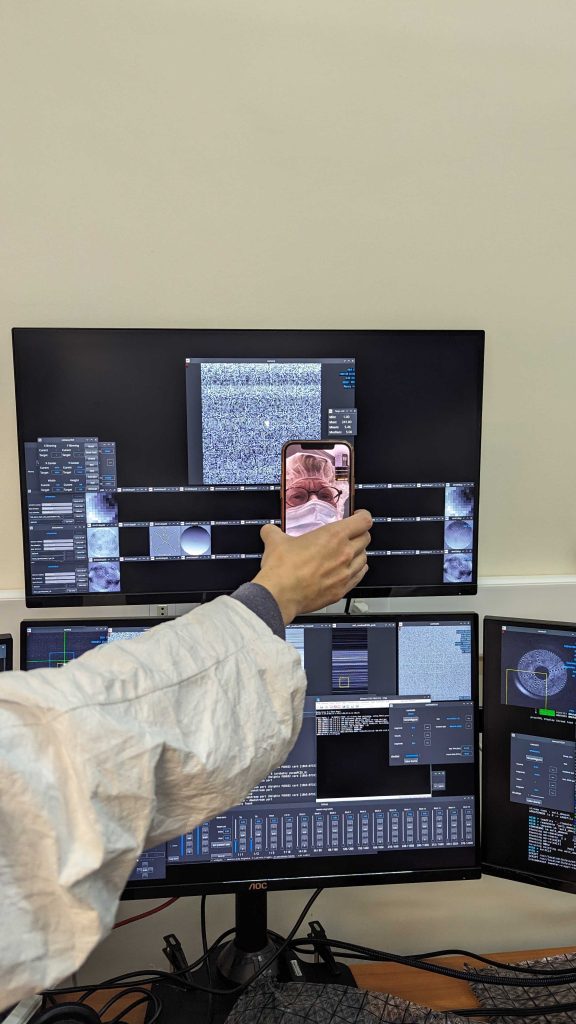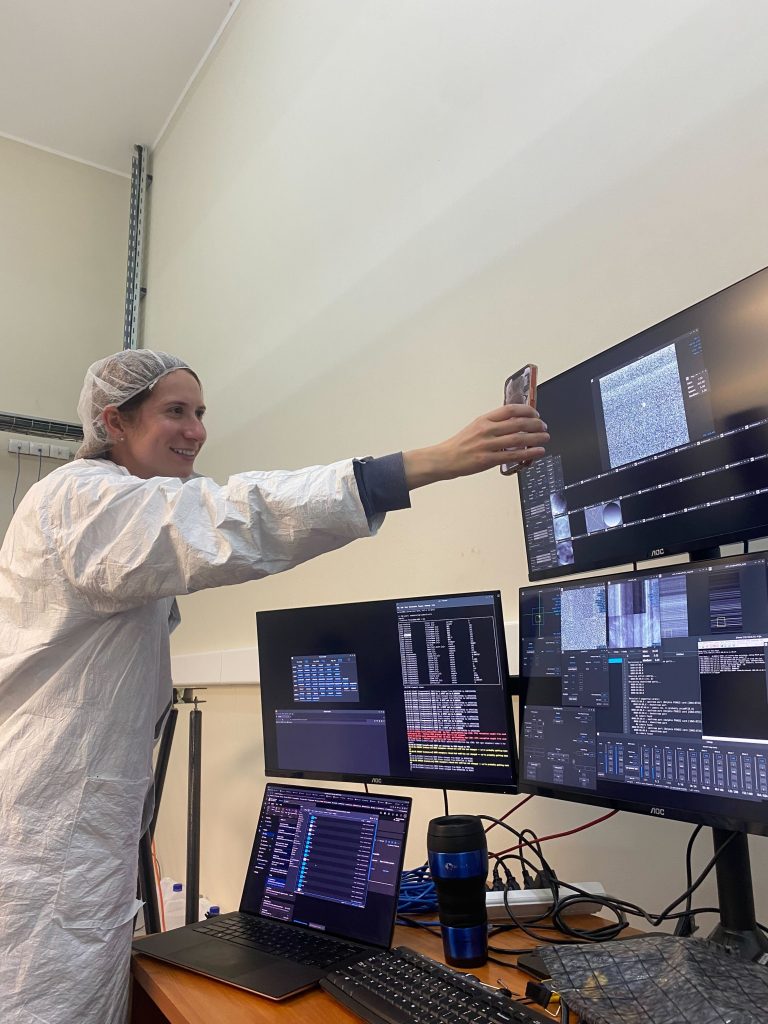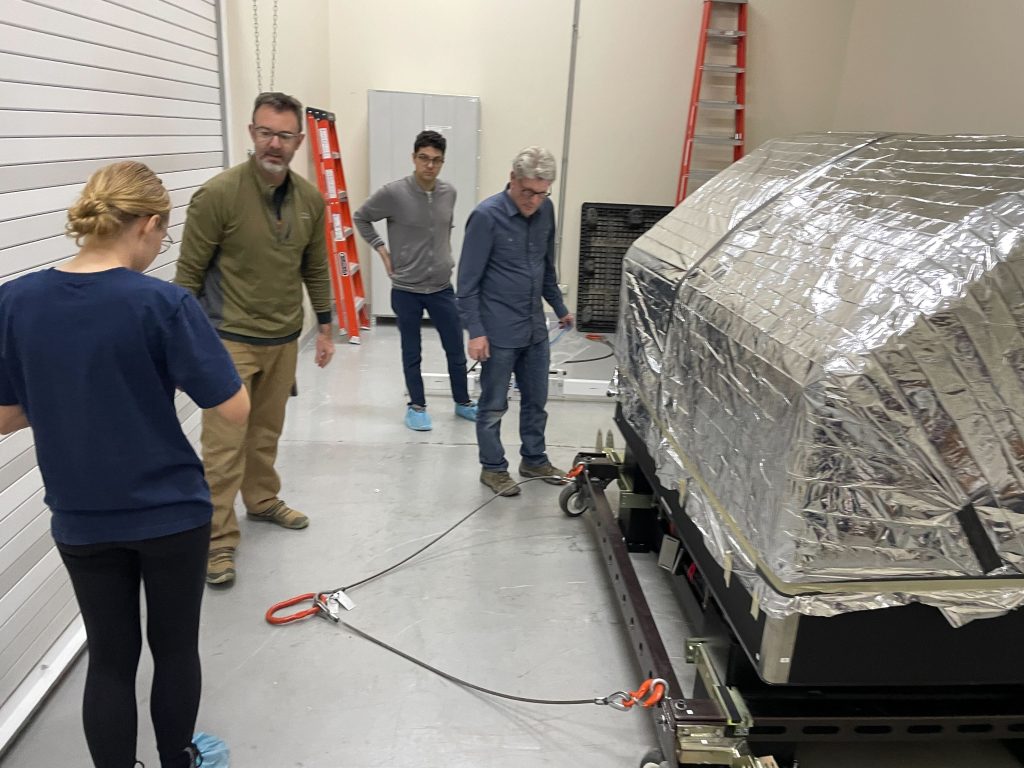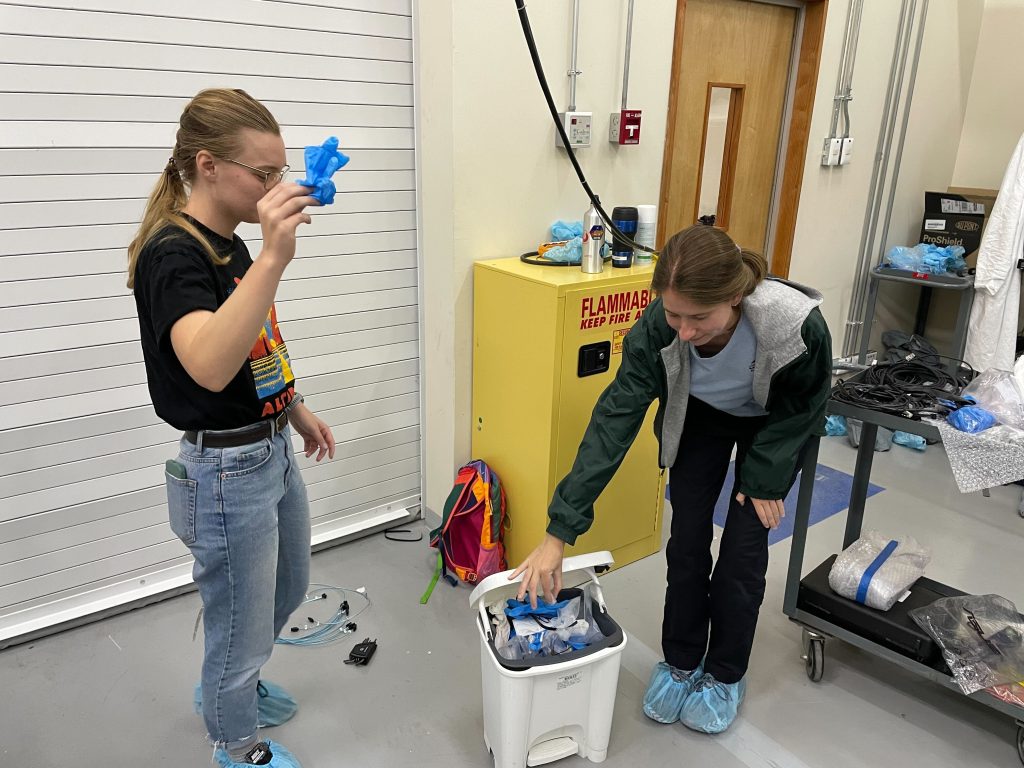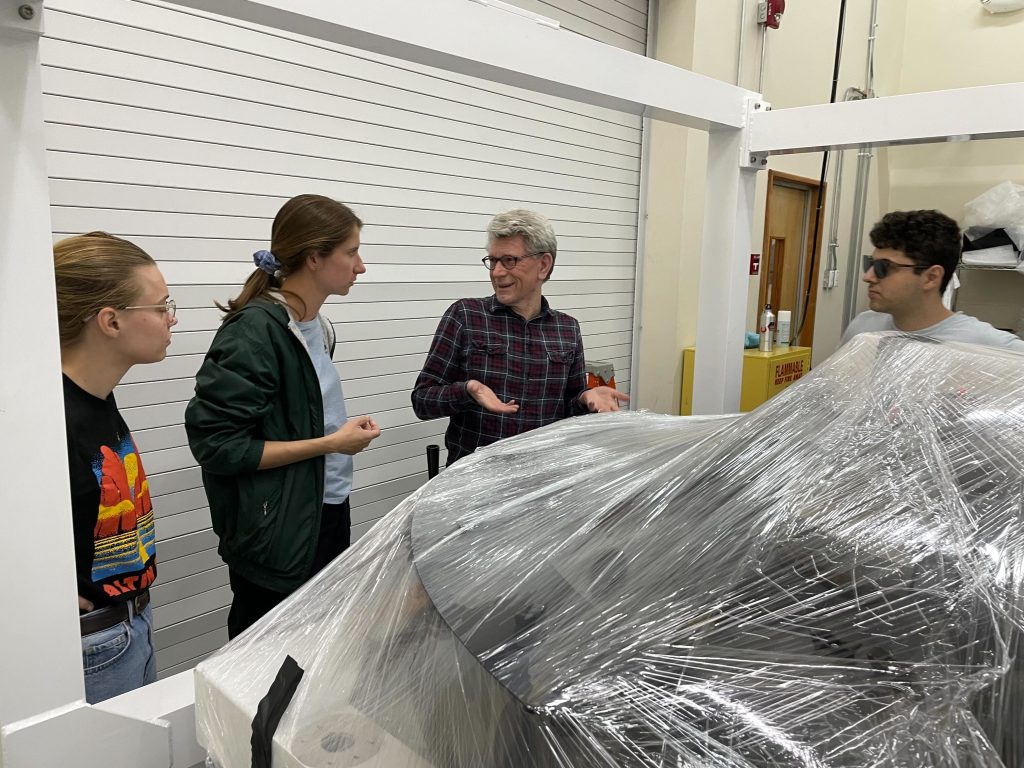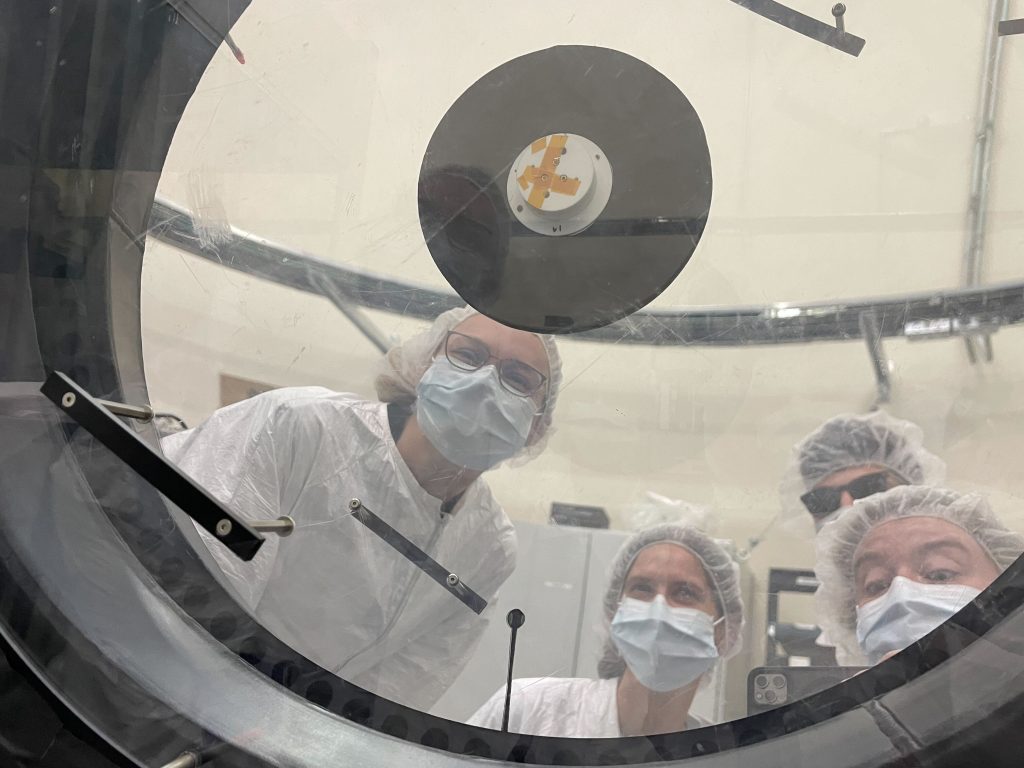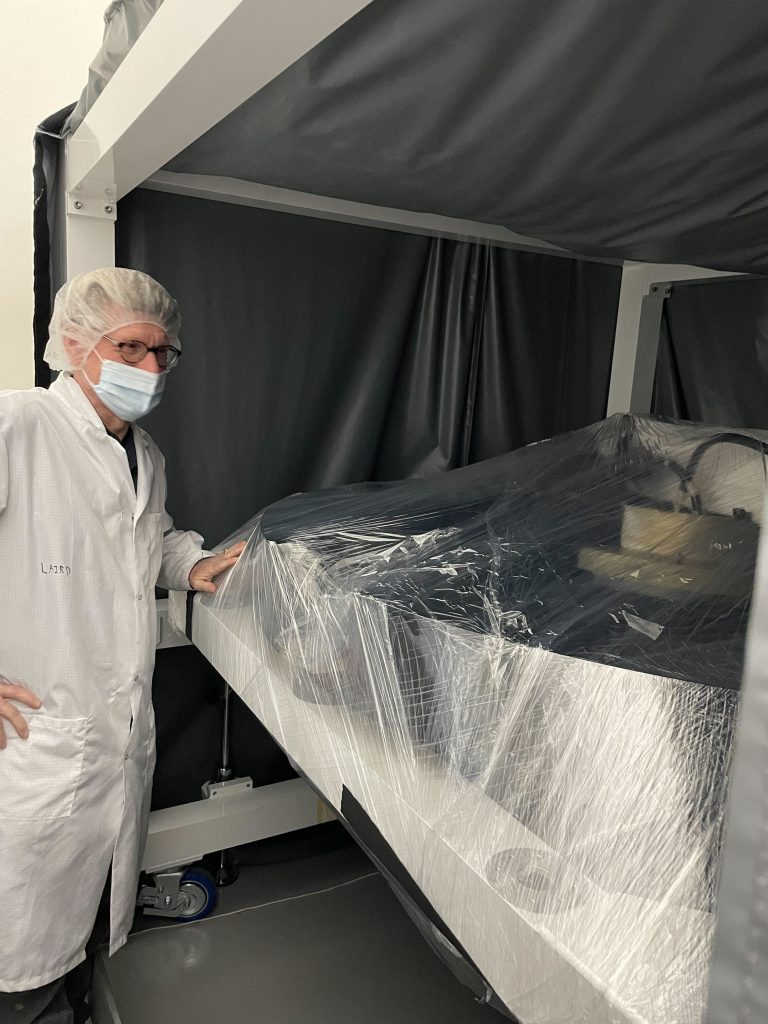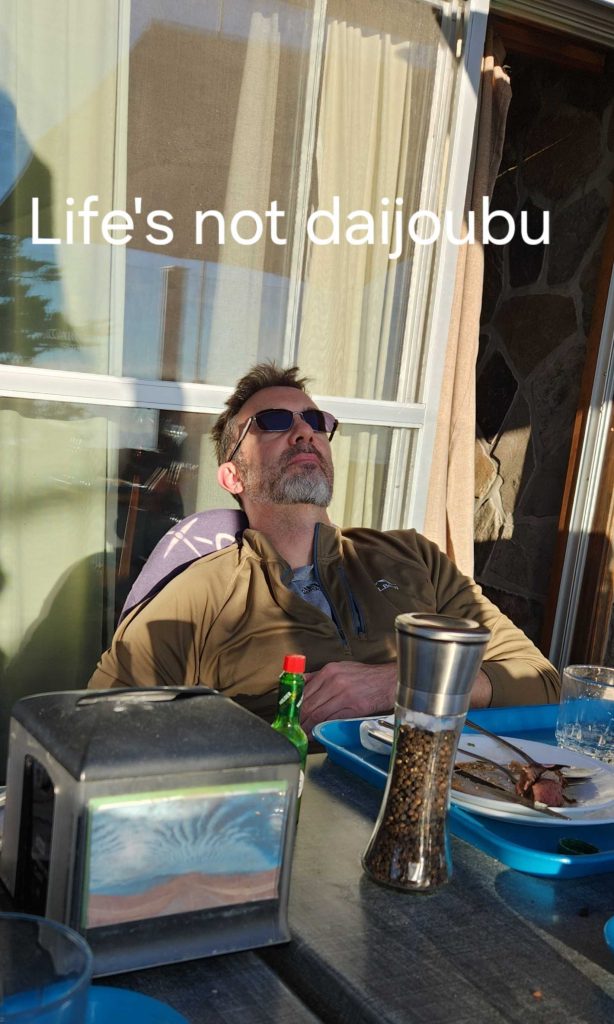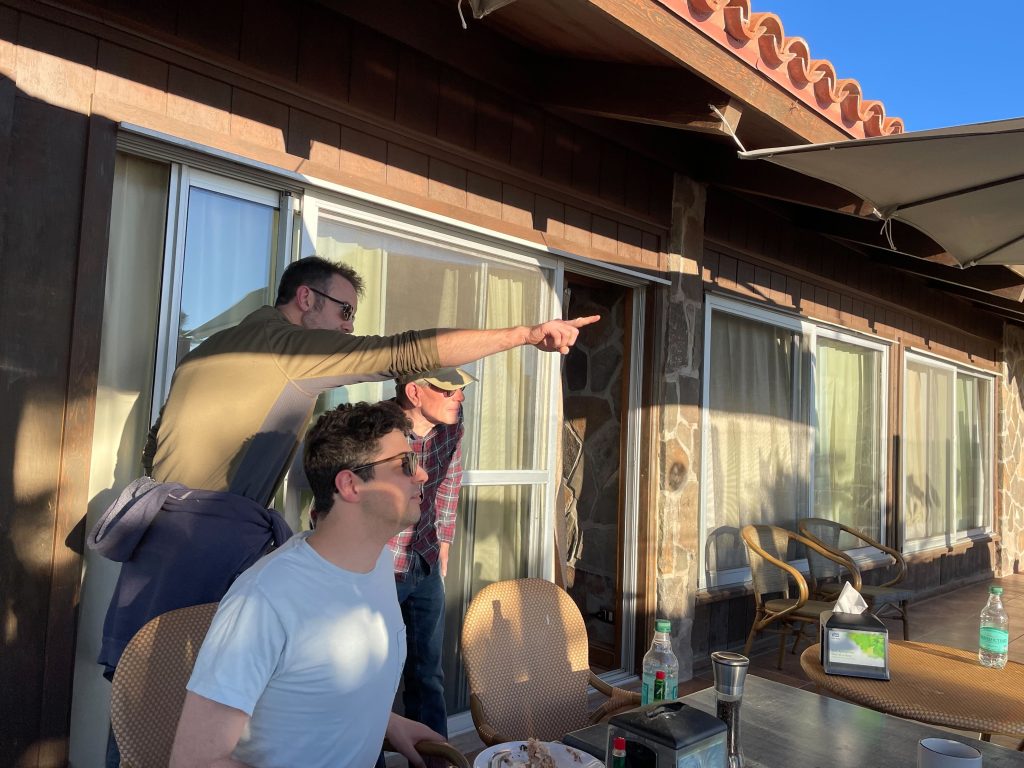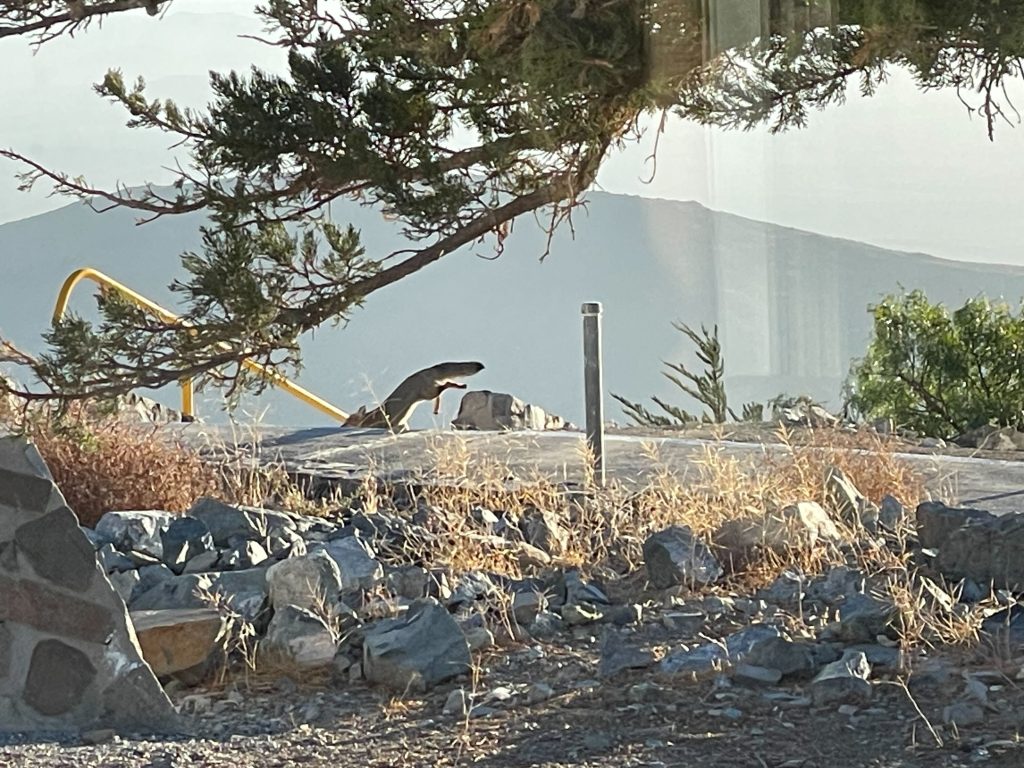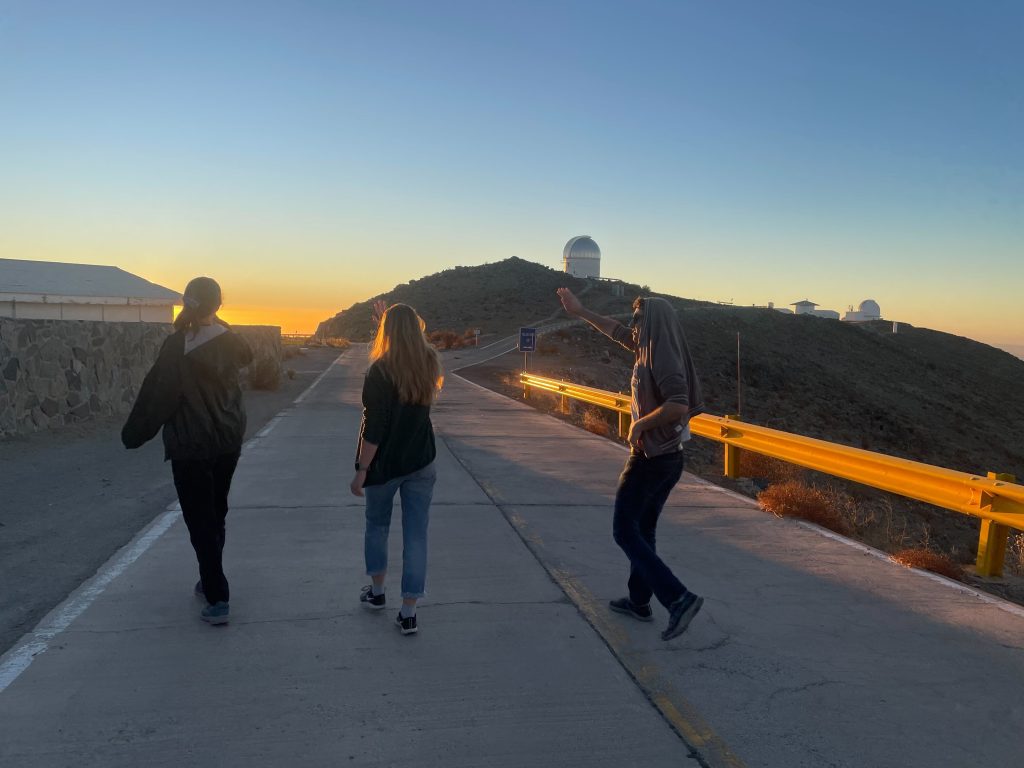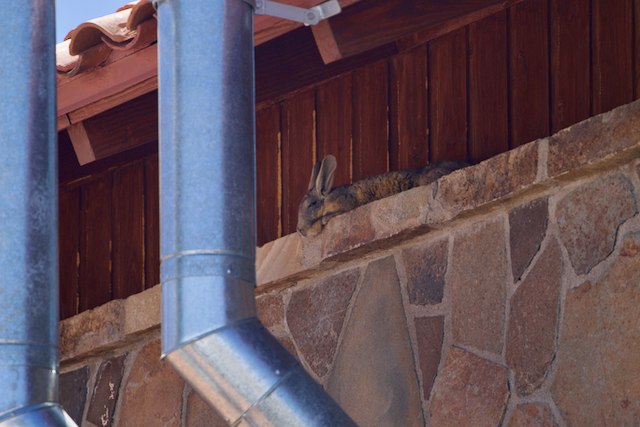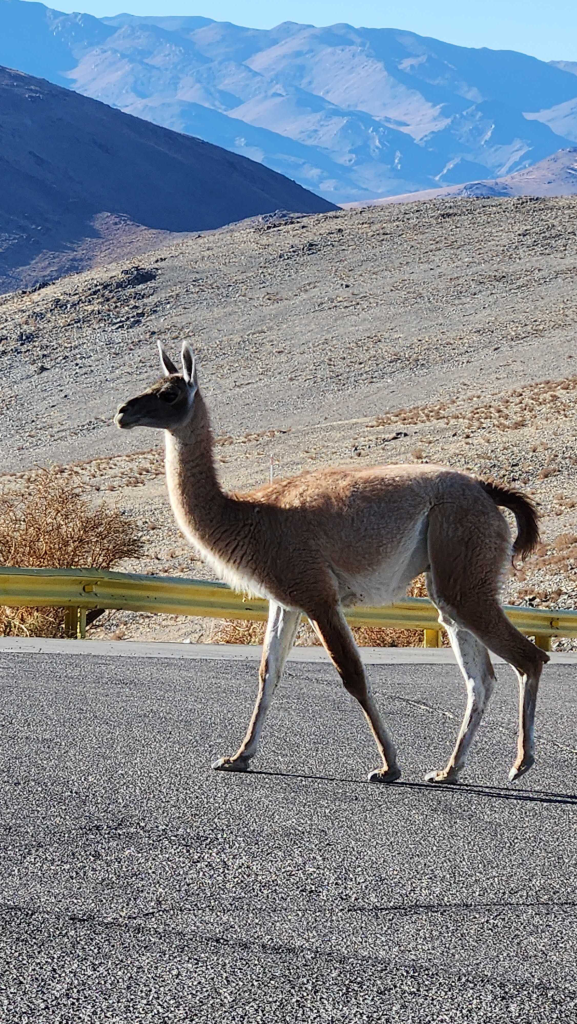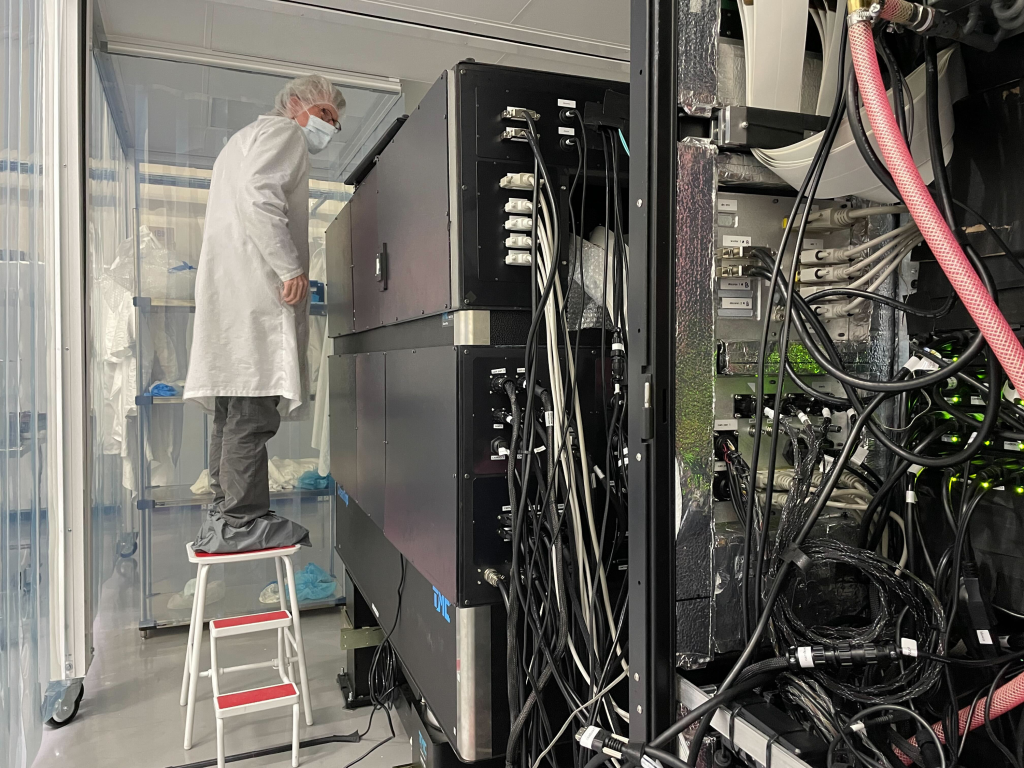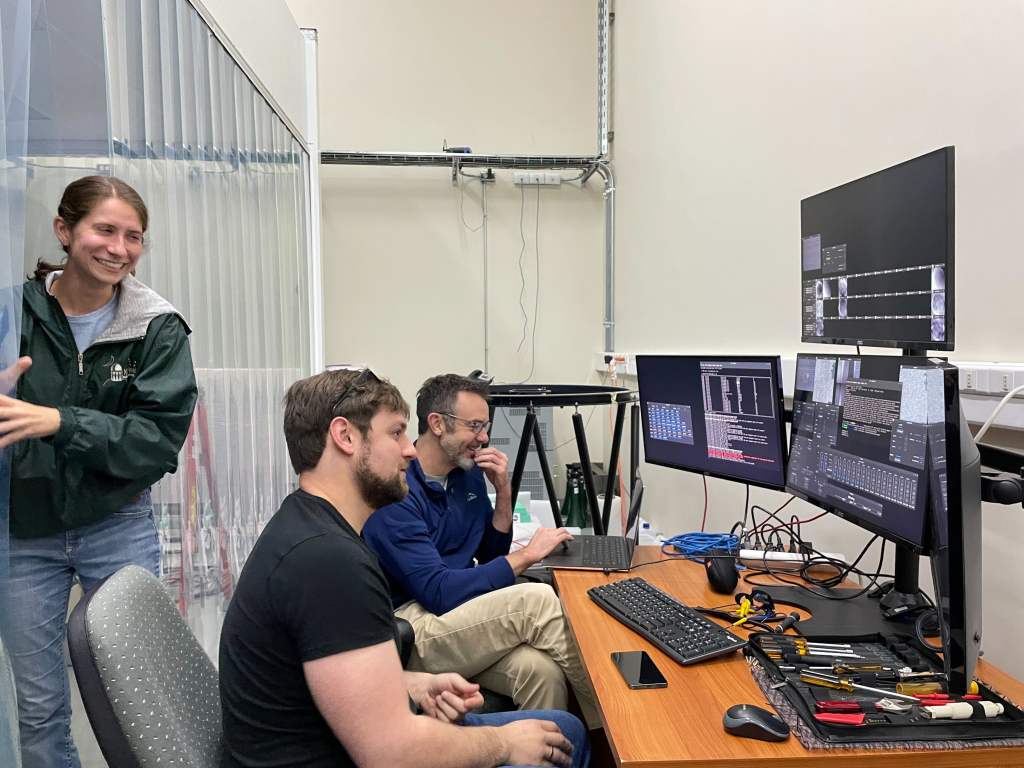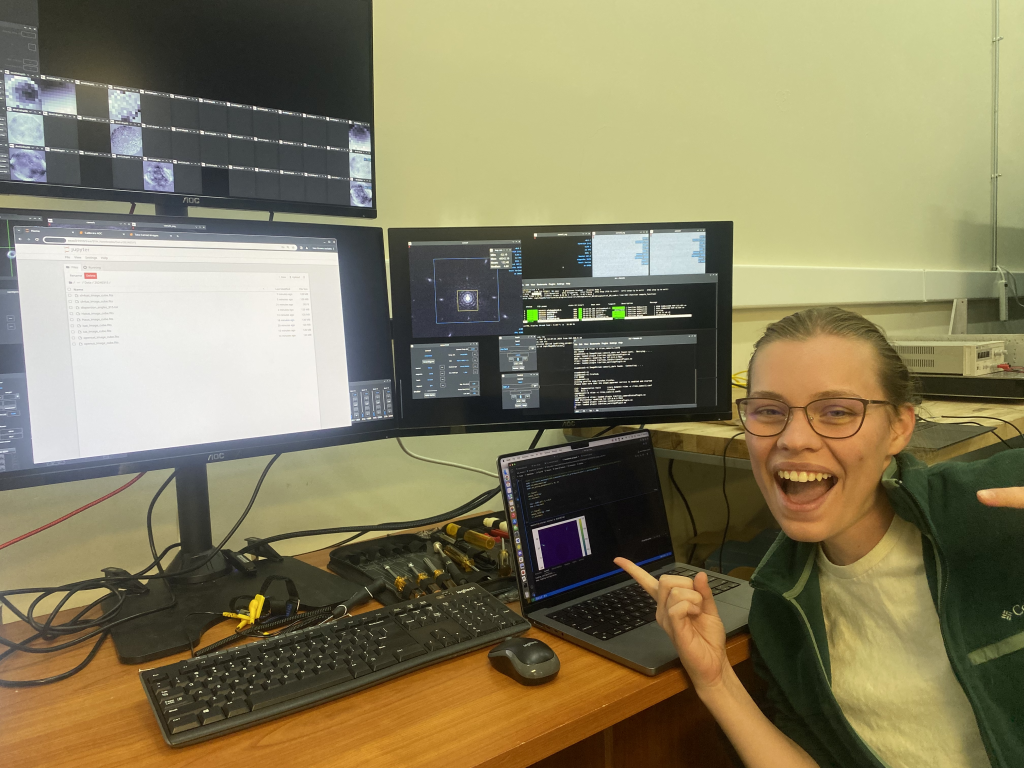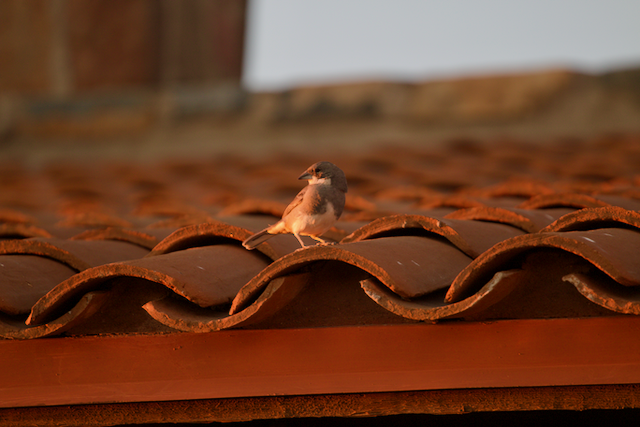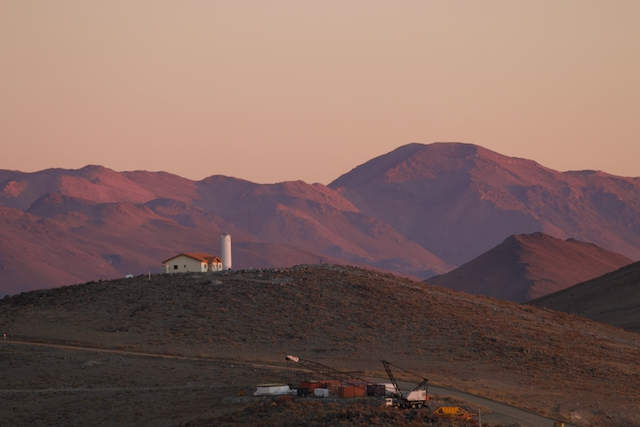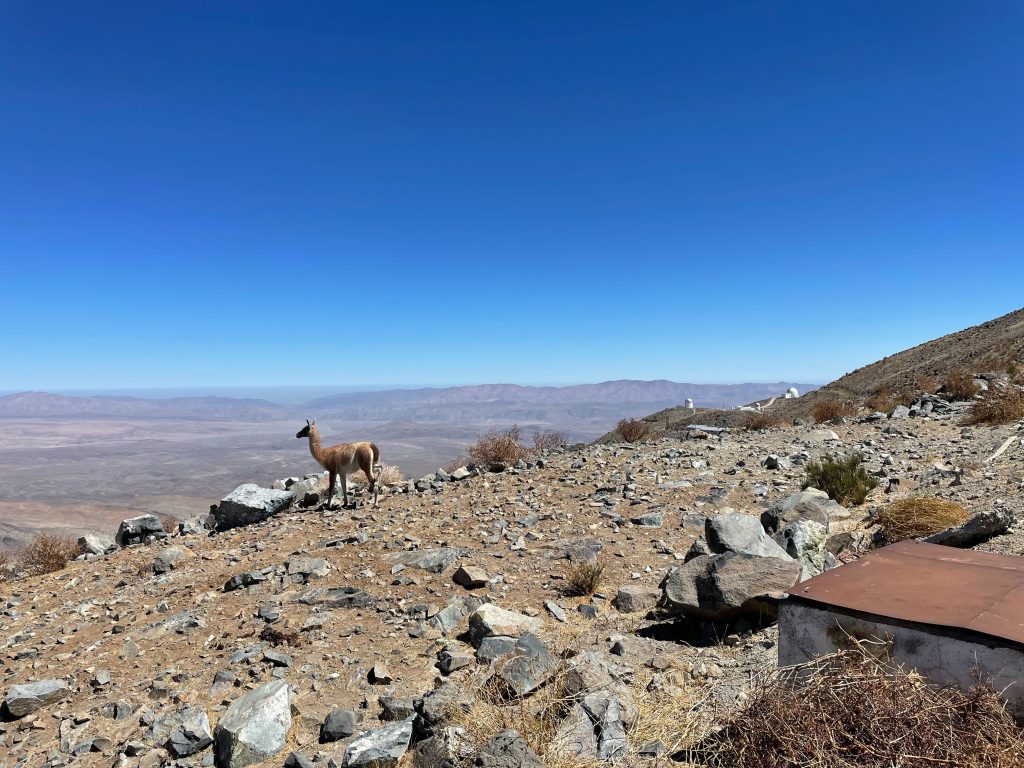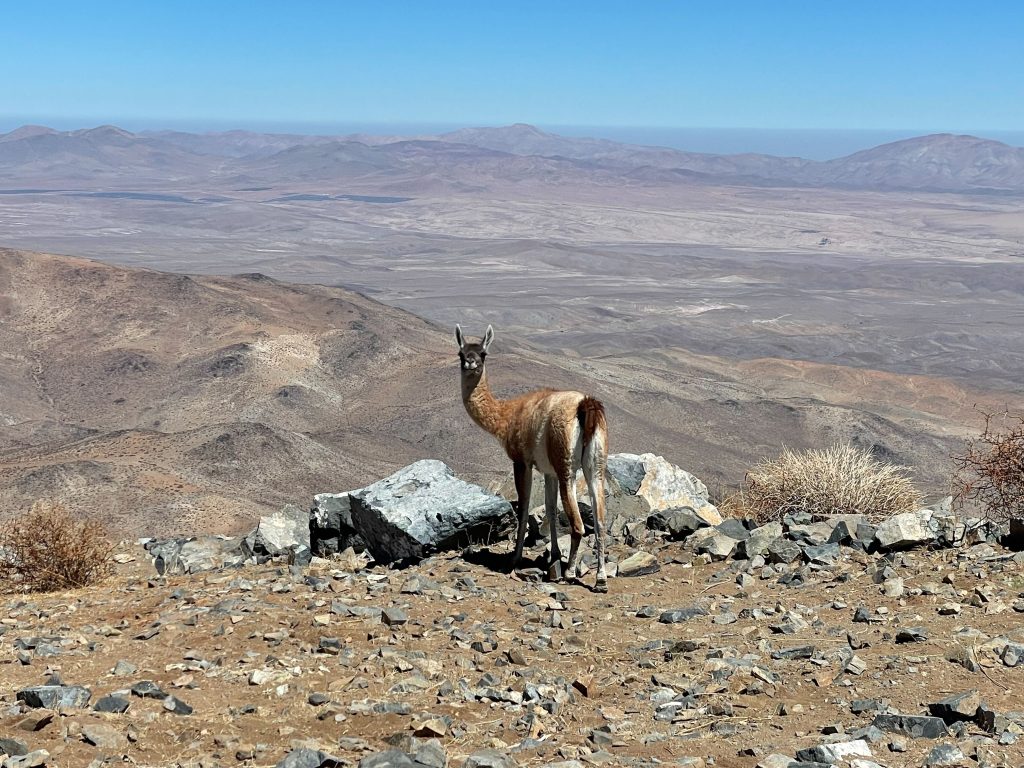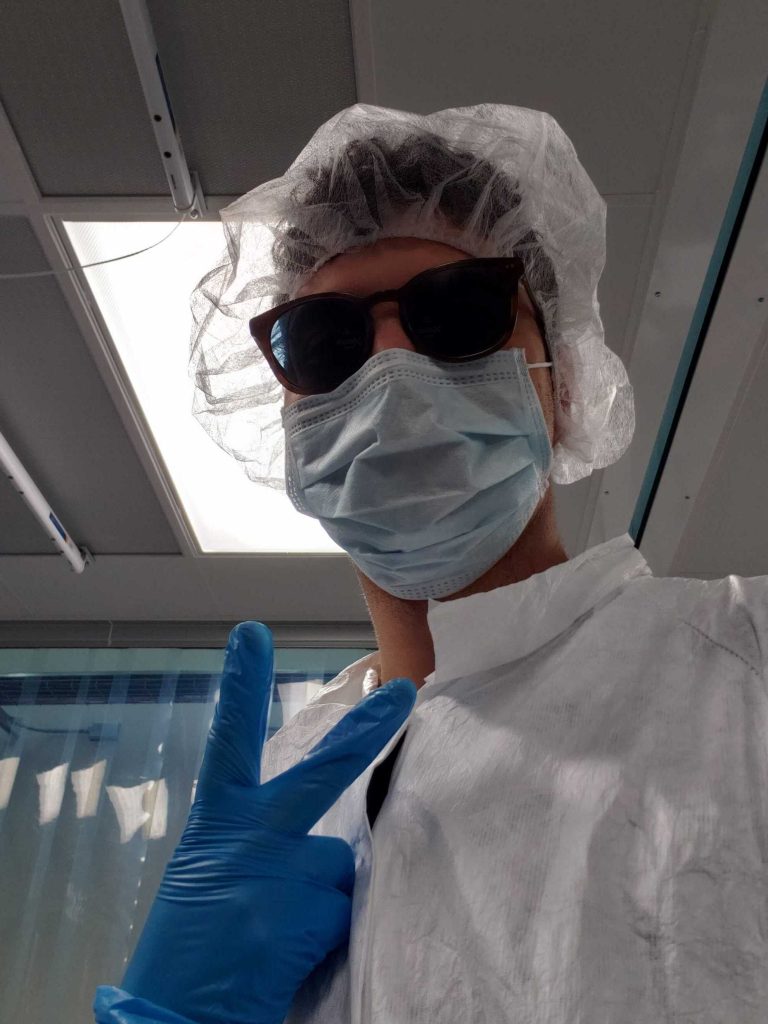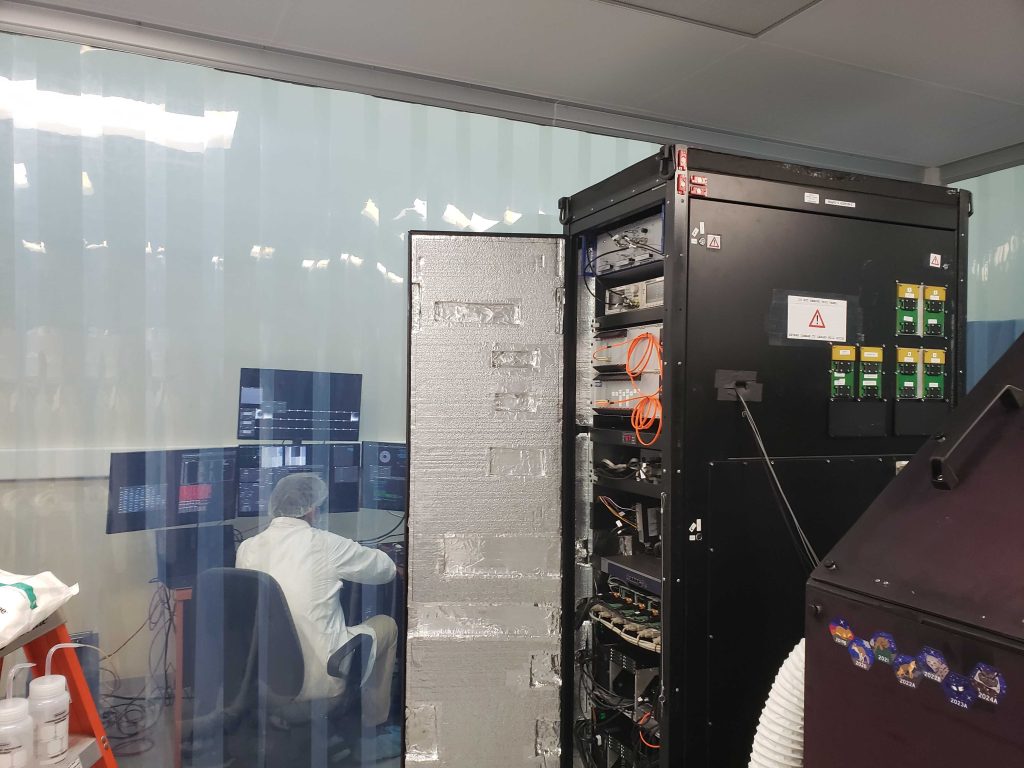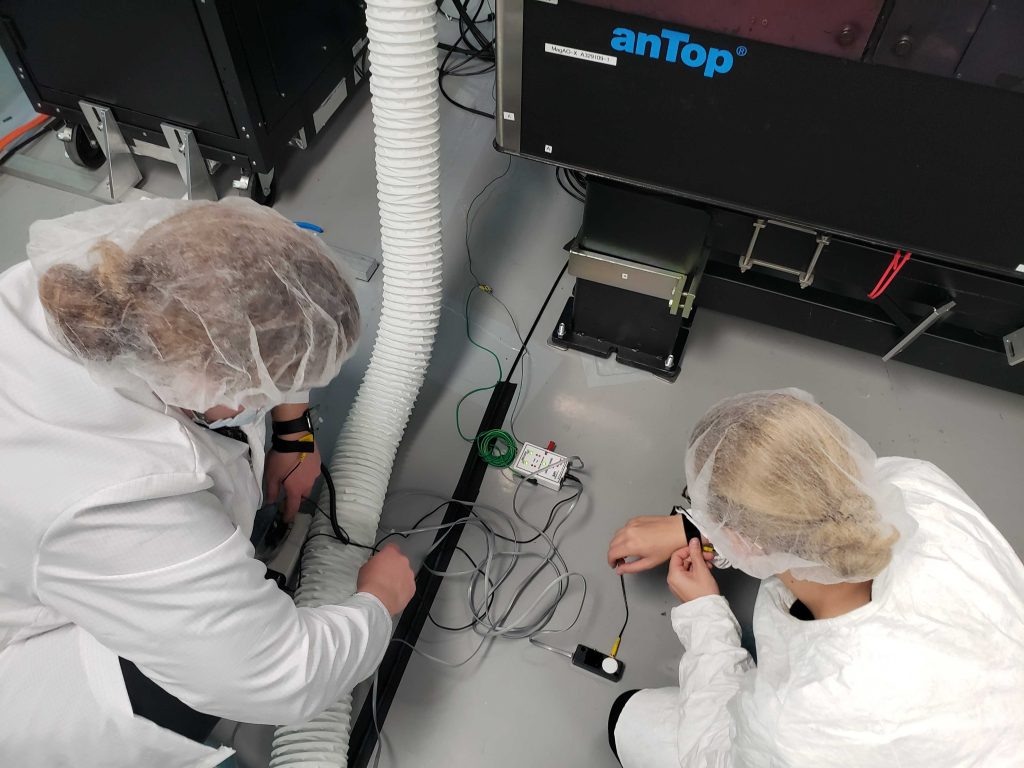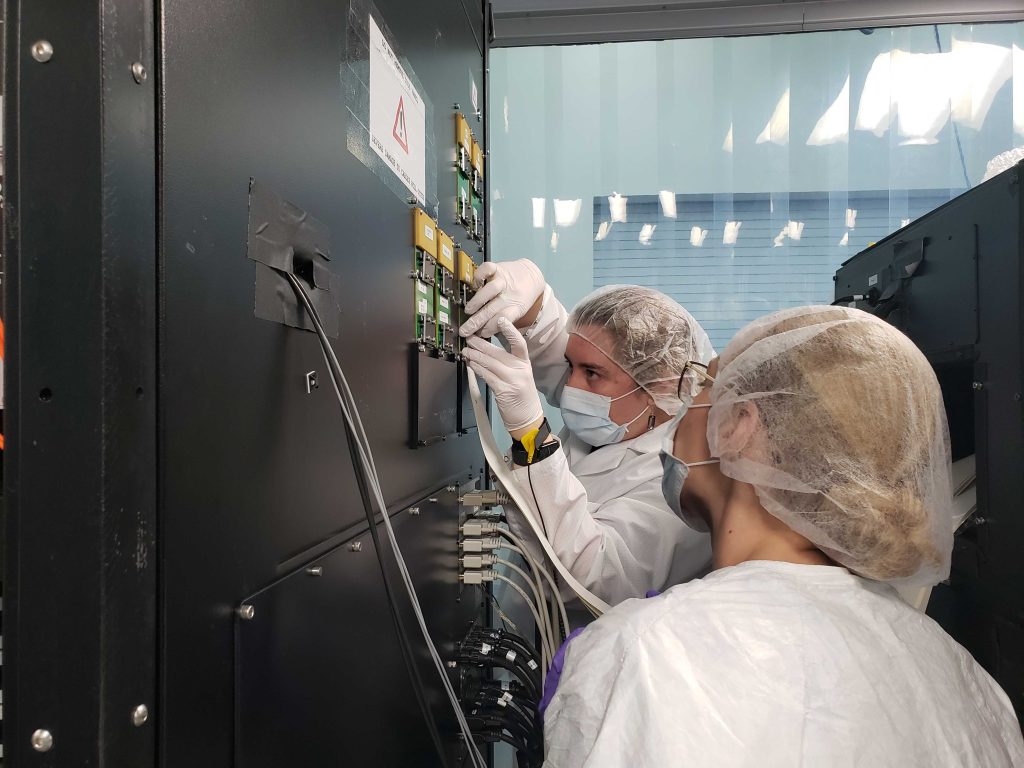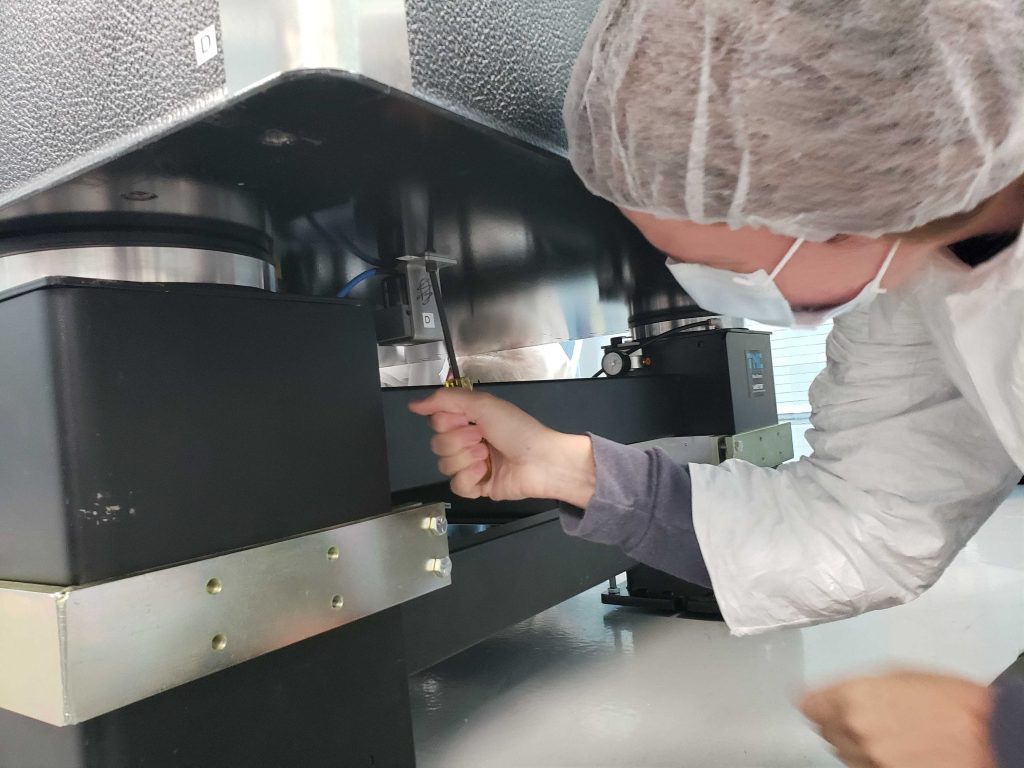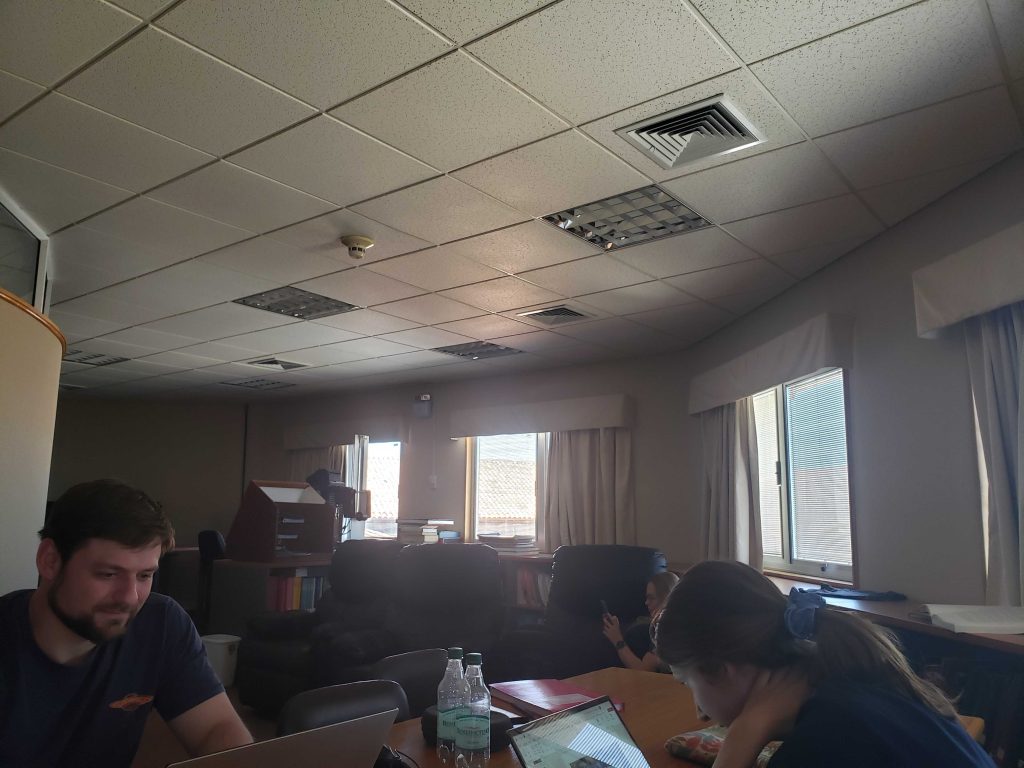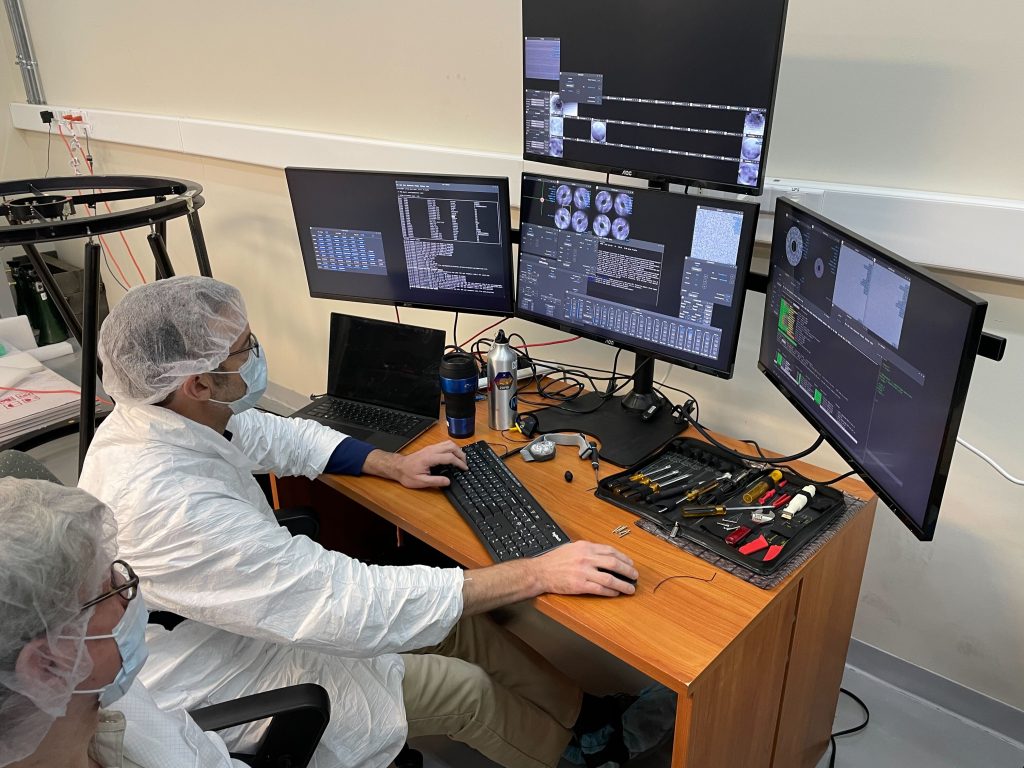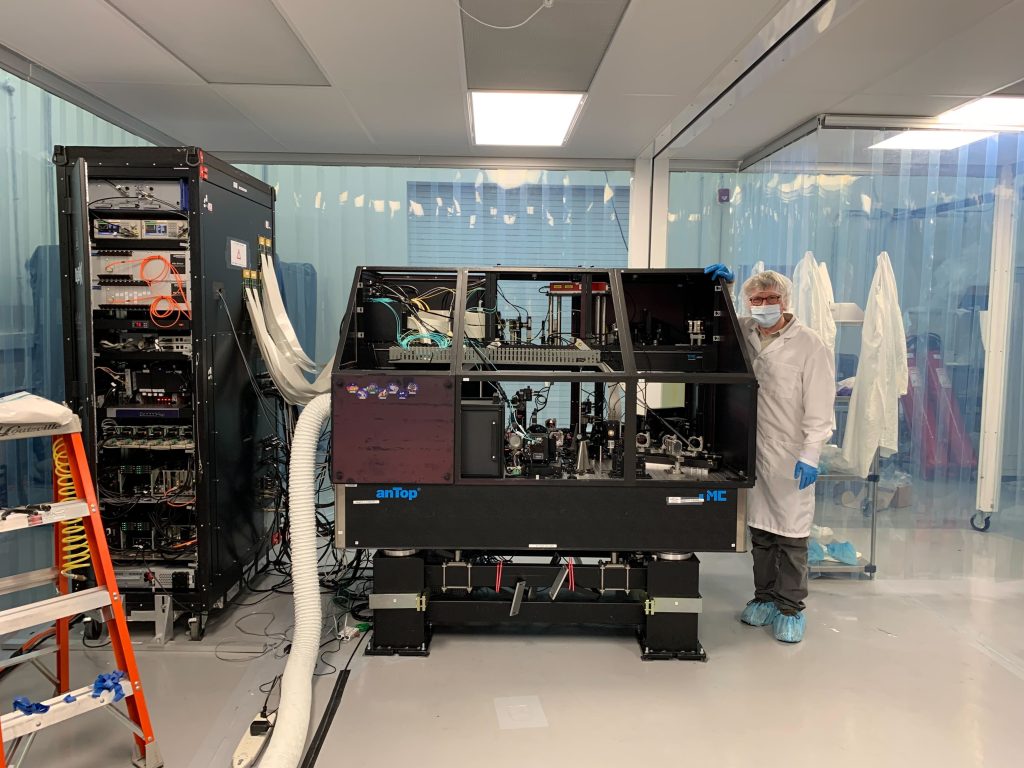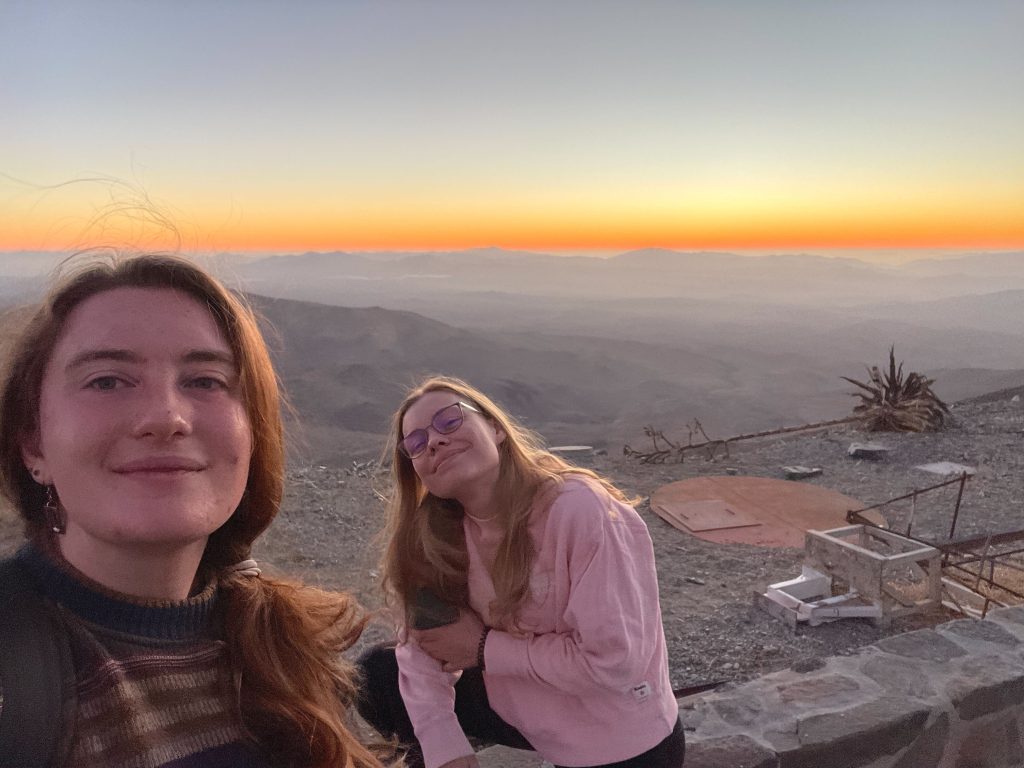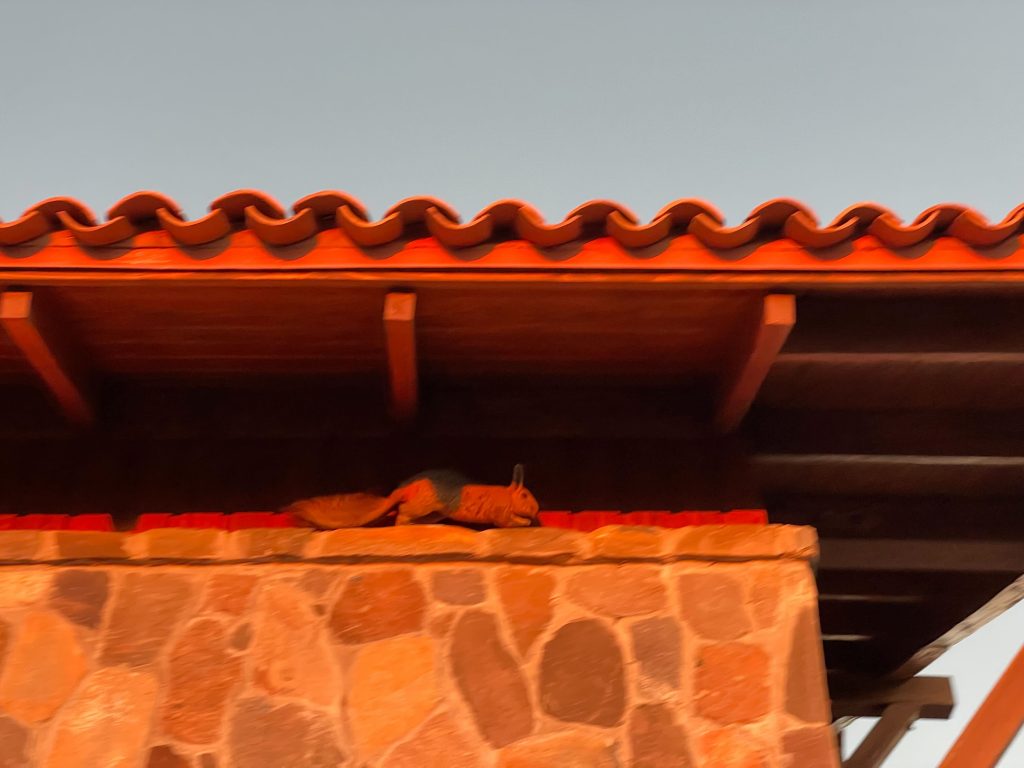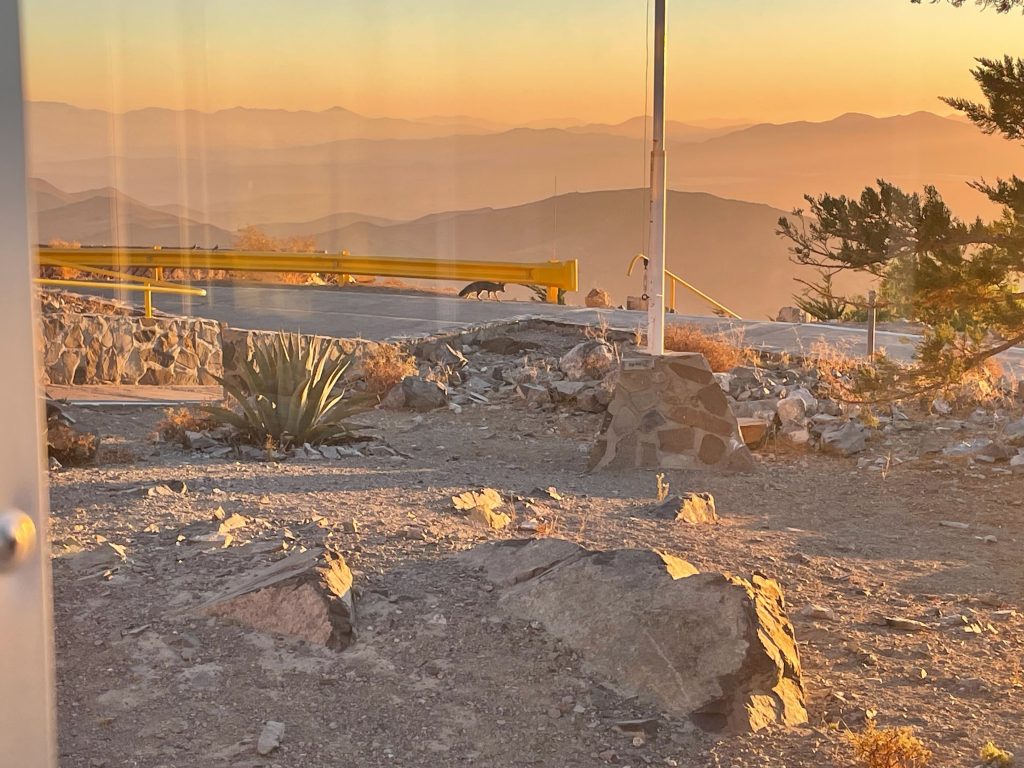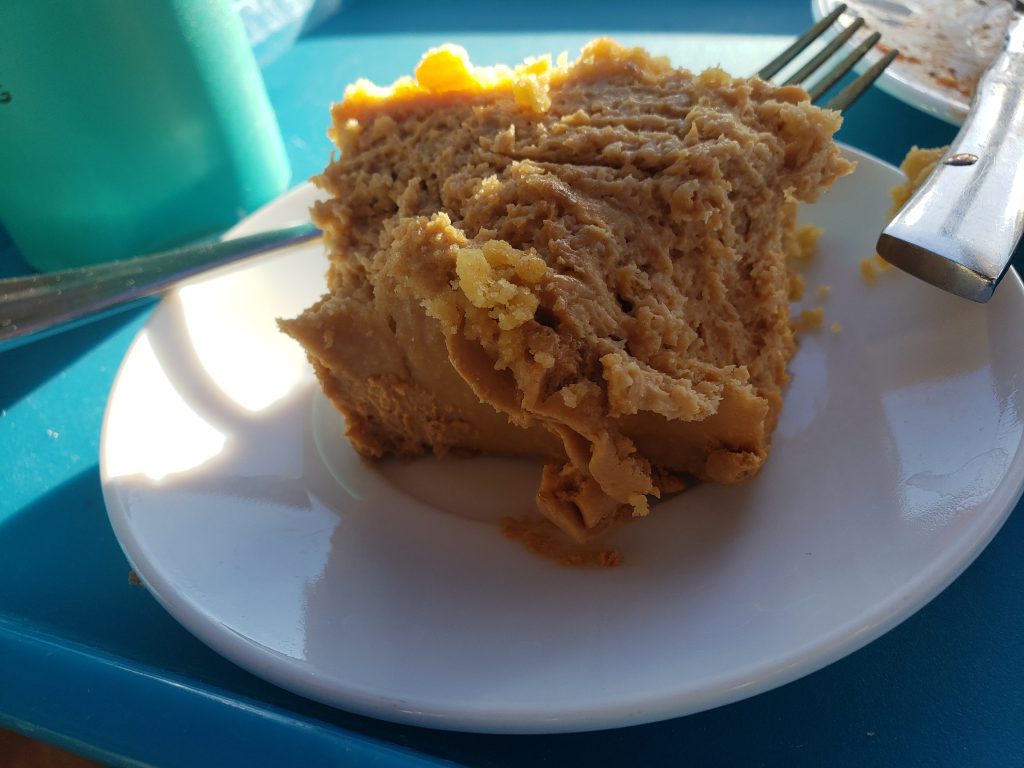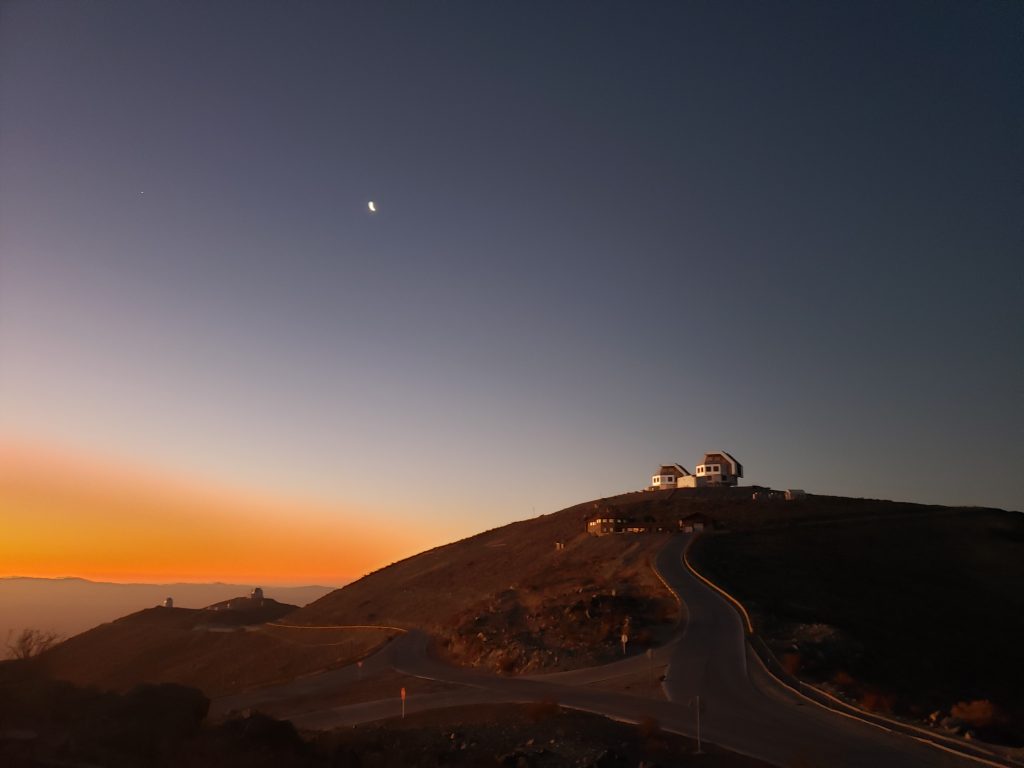Do you have what it takes to be the next great AO operator? Well today is the day that tests your mettle. Starting as bright an early as our crane operators will let us, we do a little bit of everything this 24hr shift. We pack, we crane, we unpack, we unwrap, we level, we cable, and at the very end of it all we finally get to do a little bit of why we’re here: astronomy.
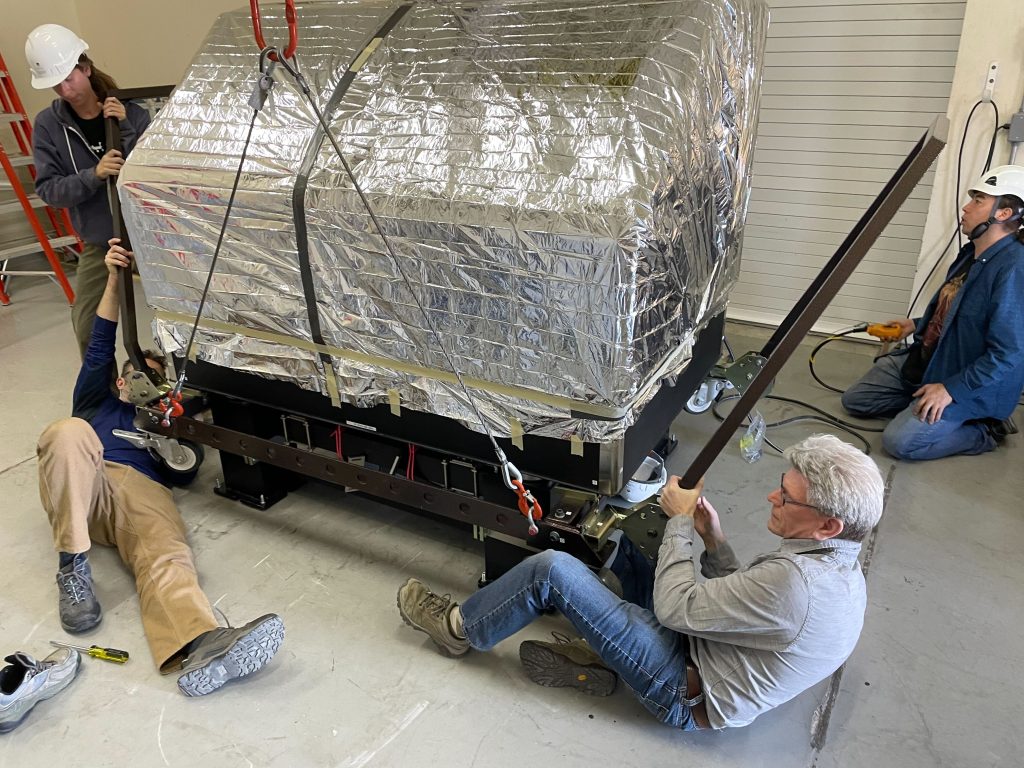
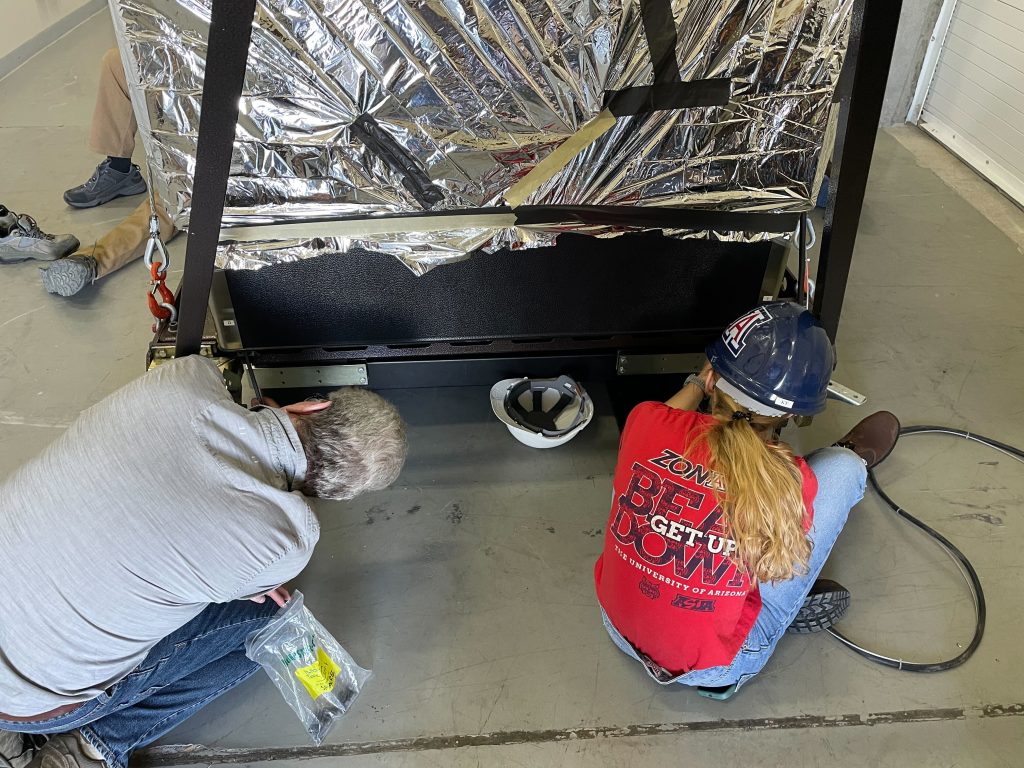
The day started out with the projects greatest fiend, the cart. We build it around the table to help it roll from truck to the telescope. Every time we assemble and disassemble this 200lb or so beast, we grow closer as a team. And perhaps ever more resentful of it. The instrument and legs arrive separately at the telescope, after getting separated at this clean room lifting step. We make sure all these moves are safe by applying tension to big items to make them go slow.
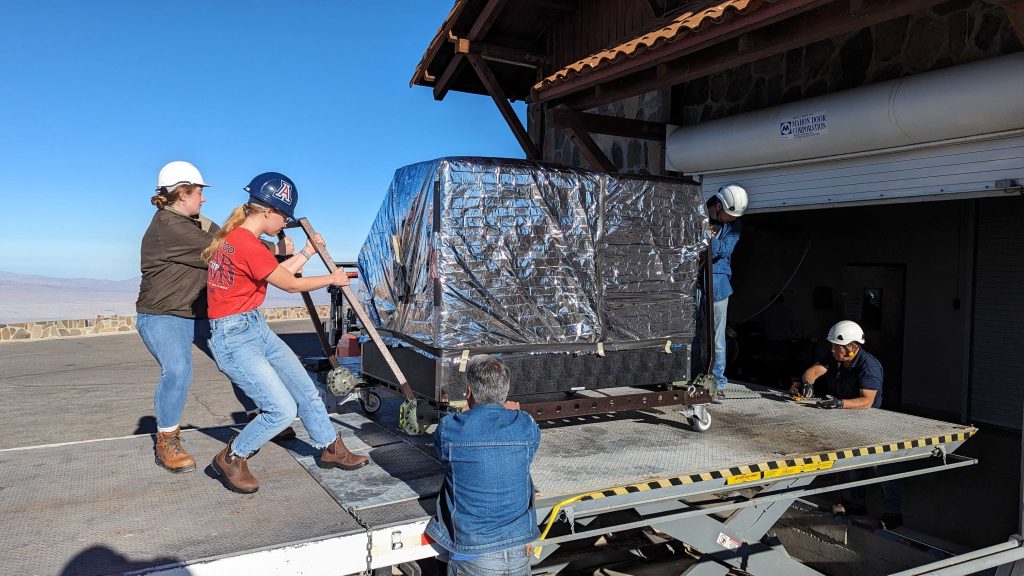
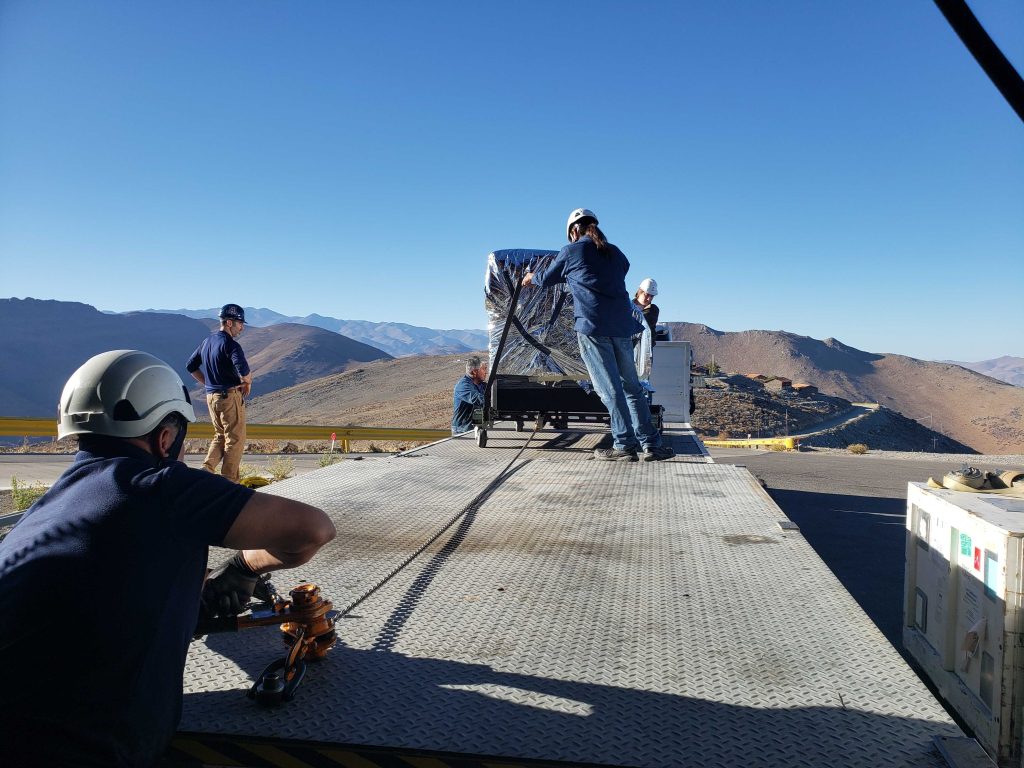
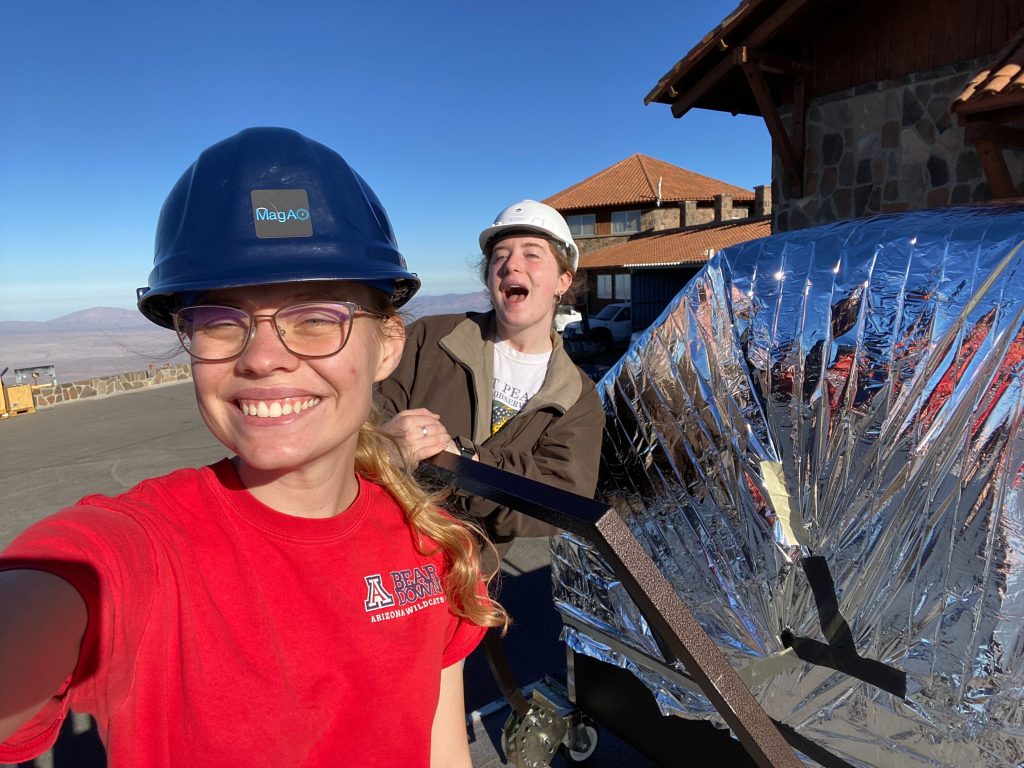
Next the PI takes a nice long walk with his million dollar baby up the hill. The rest of us know it’s best to let them have their space.
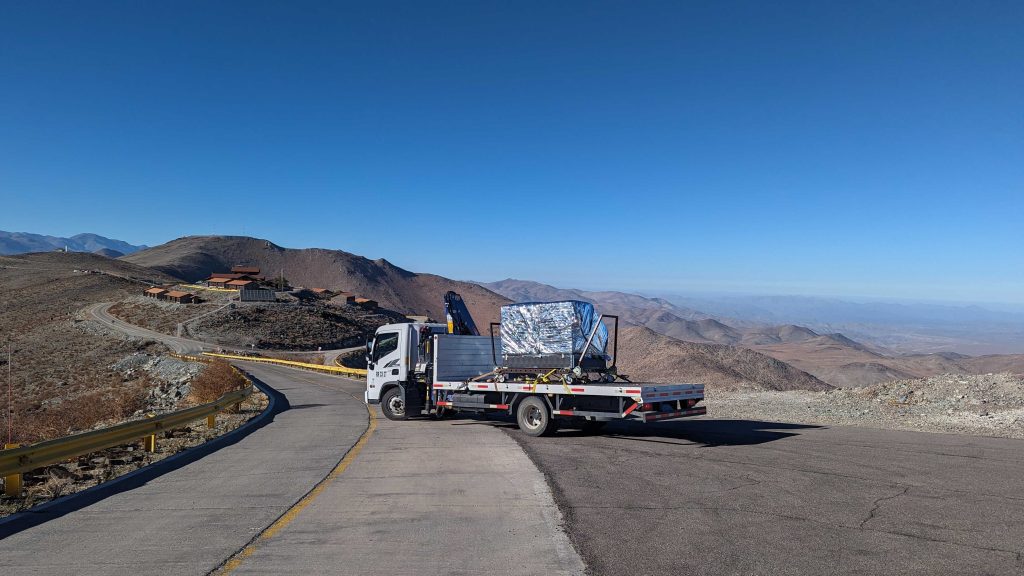
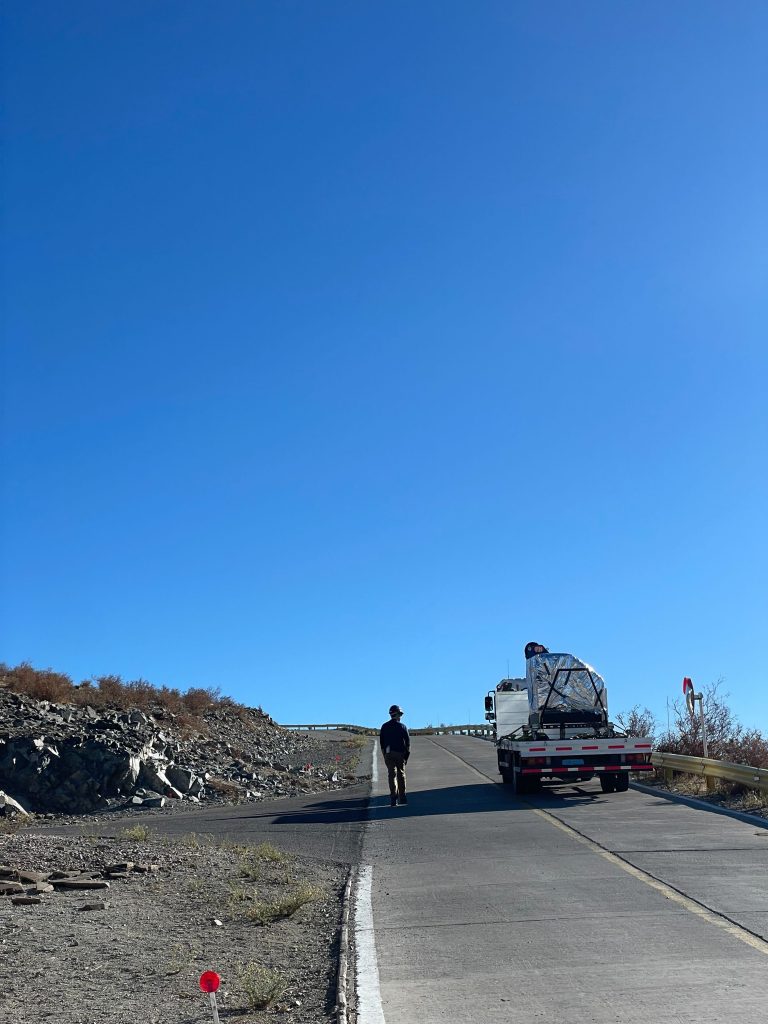
While the flatbed makes its slow ascent, the rest of the team prepares the platform and tools to make ready for its arrival.
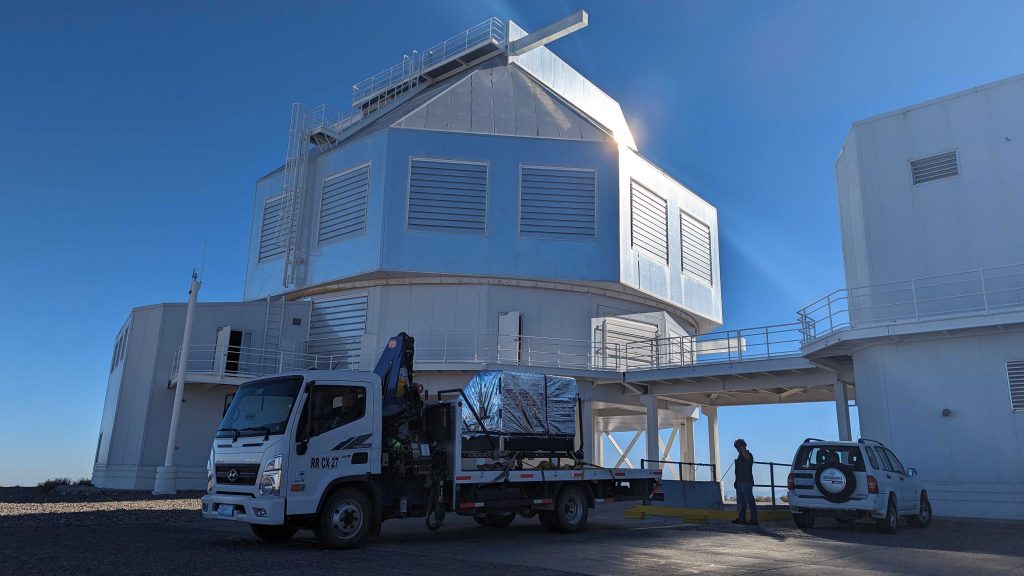
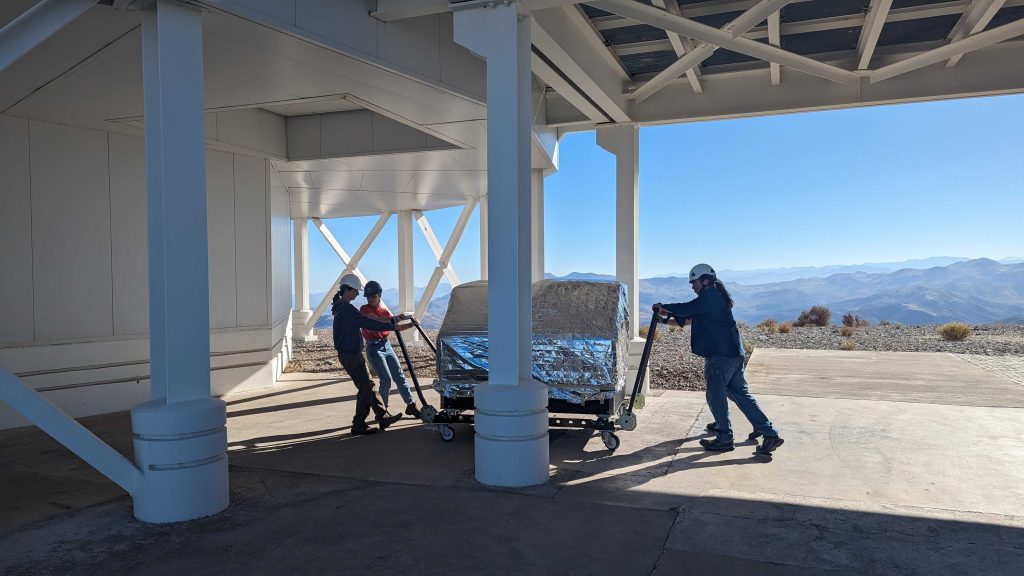
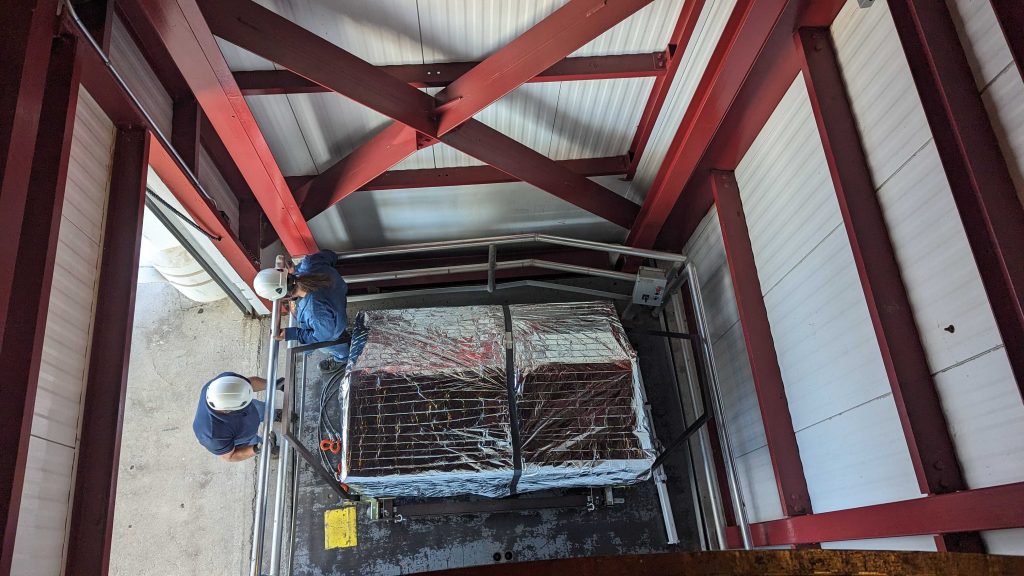
Once the instrument is in the telescope dome, there’s a set of reverse craning and anti-cart activities that need to quickly happen. Good thing we’re getting good at this. As long as we follow Laird’s carefully labeled baggies, we don’t go too wrong.
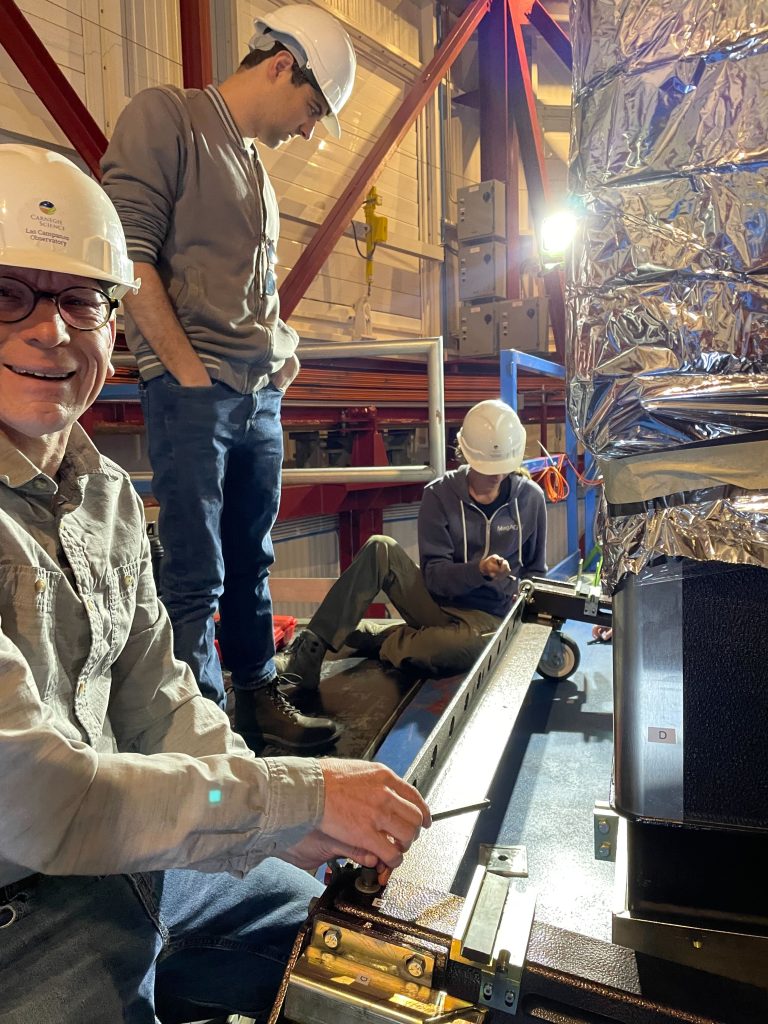
Juan and the guys went back to get our electronics while Maggie lead the table team in the fine grained work of leveling a two ton floating table. Maggie might just need to be our Laird on the May run, and under her guidance we leveled the table in record time!
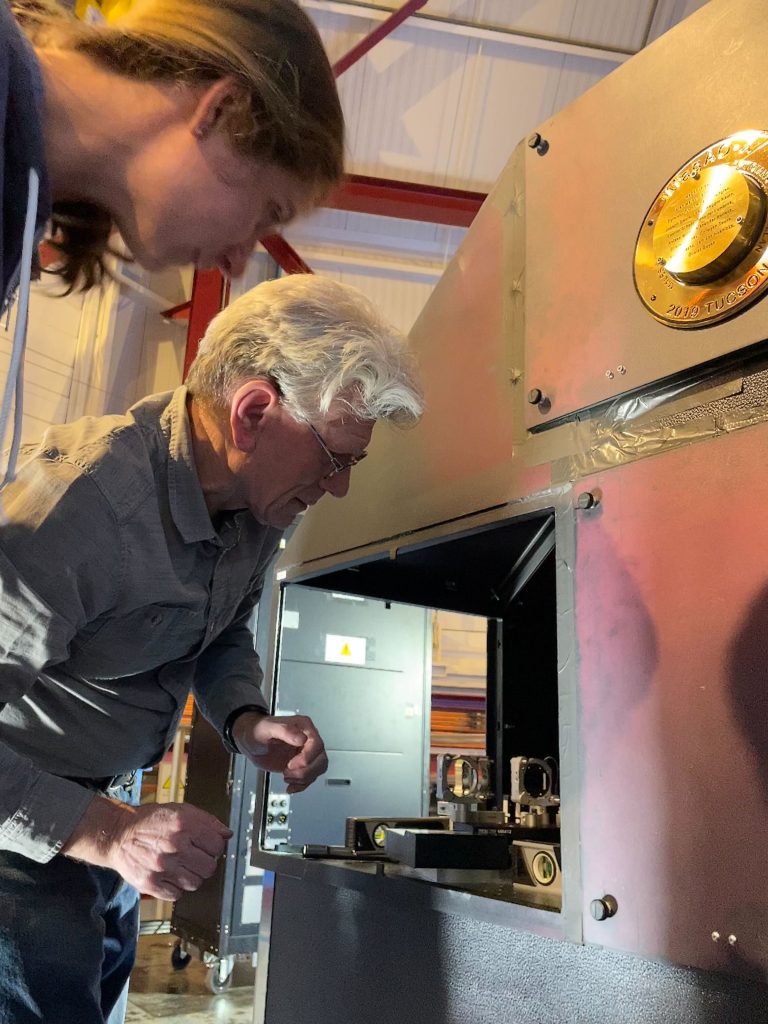
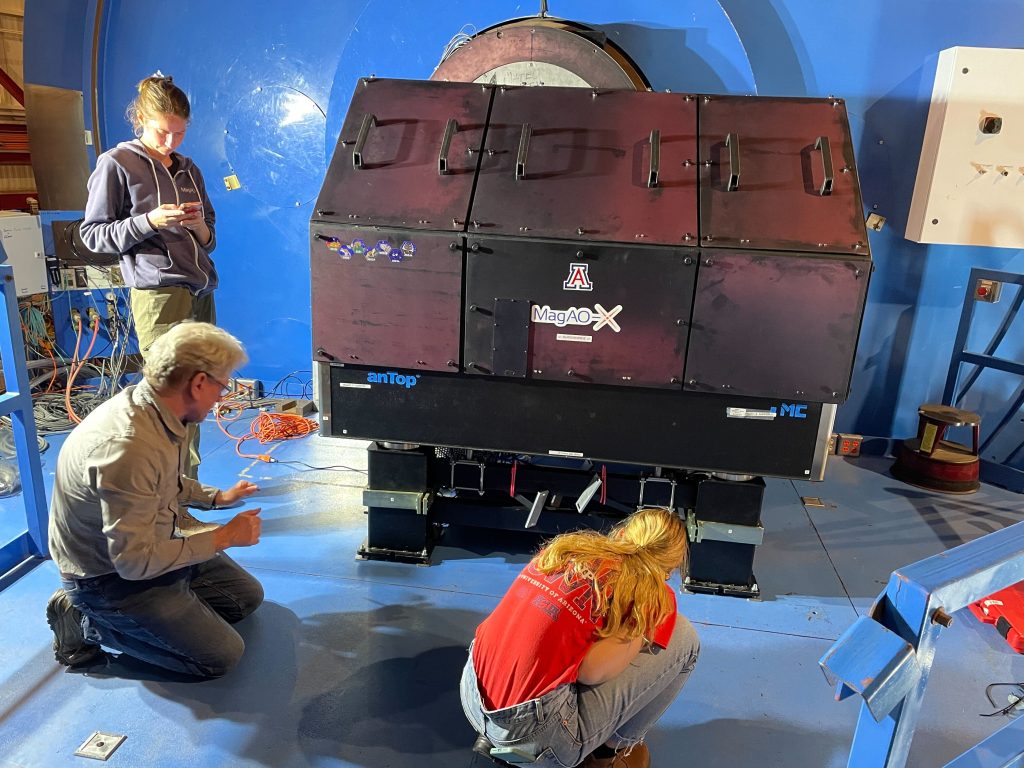
The electronics rack gets its ride up, and is placed next to the table, and then we can start recabling all the things we unplugged just last night. It’s a big dejavu moment. By dinner, we have all but one DM connected. (We still eat fast though, because the less on sky time we waste, the better. )
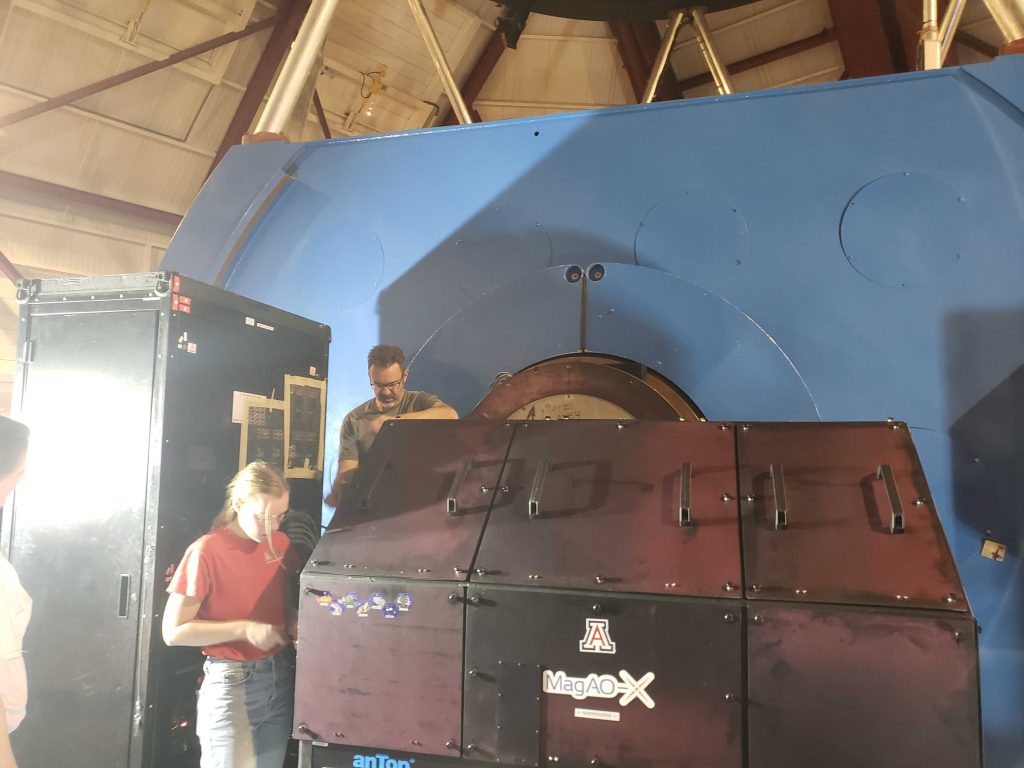
Meanwhile, our astronomer heavy contingent started to make their way out here. Out of three who were supposed to arrive today, only Jay made it, for a various calamitous reasons. Logan got all the way to La Serena, and will be joining us later this week. If all goes well, Jialin will make all the connections she needs and will be here by tomorrow.
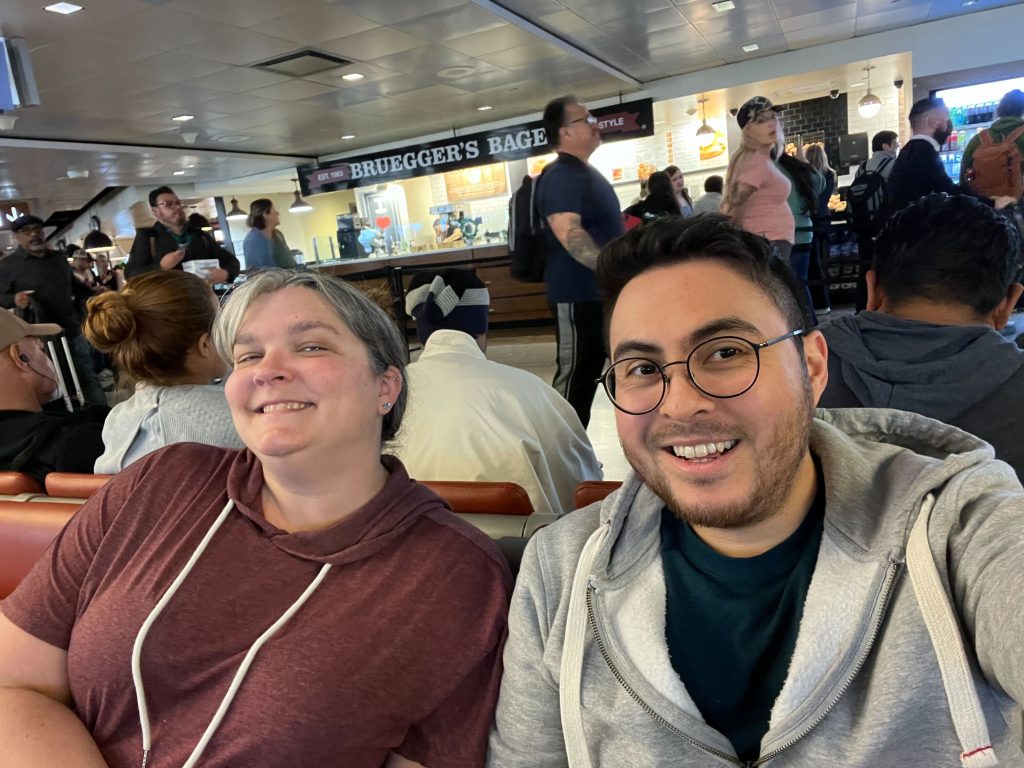
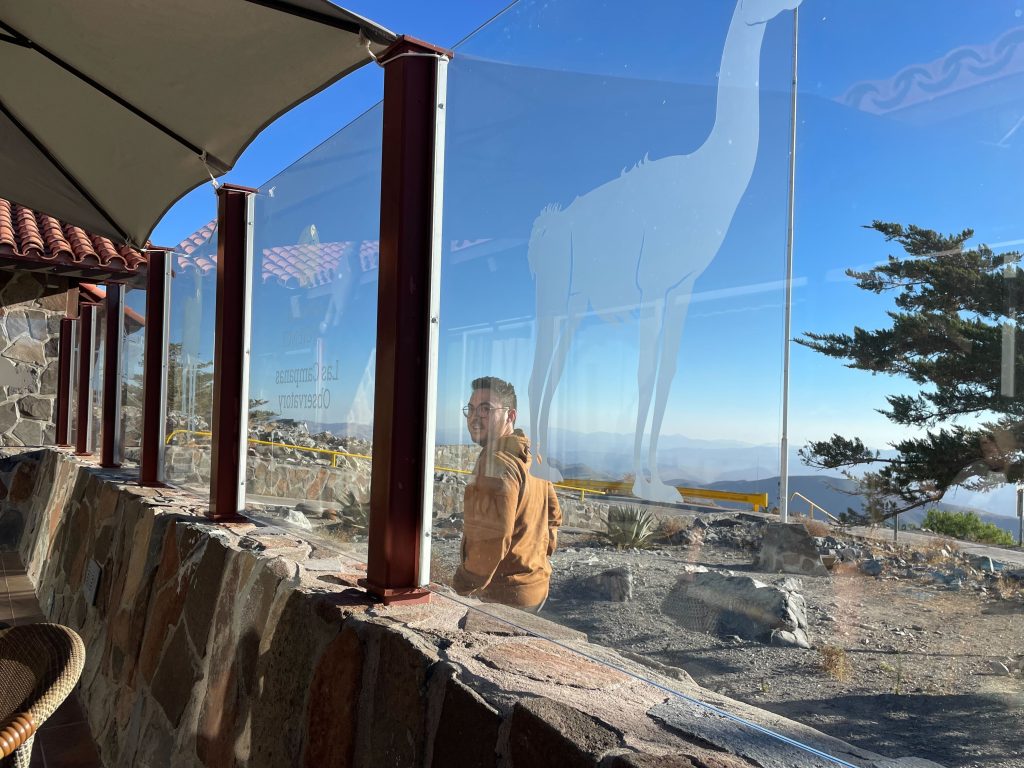
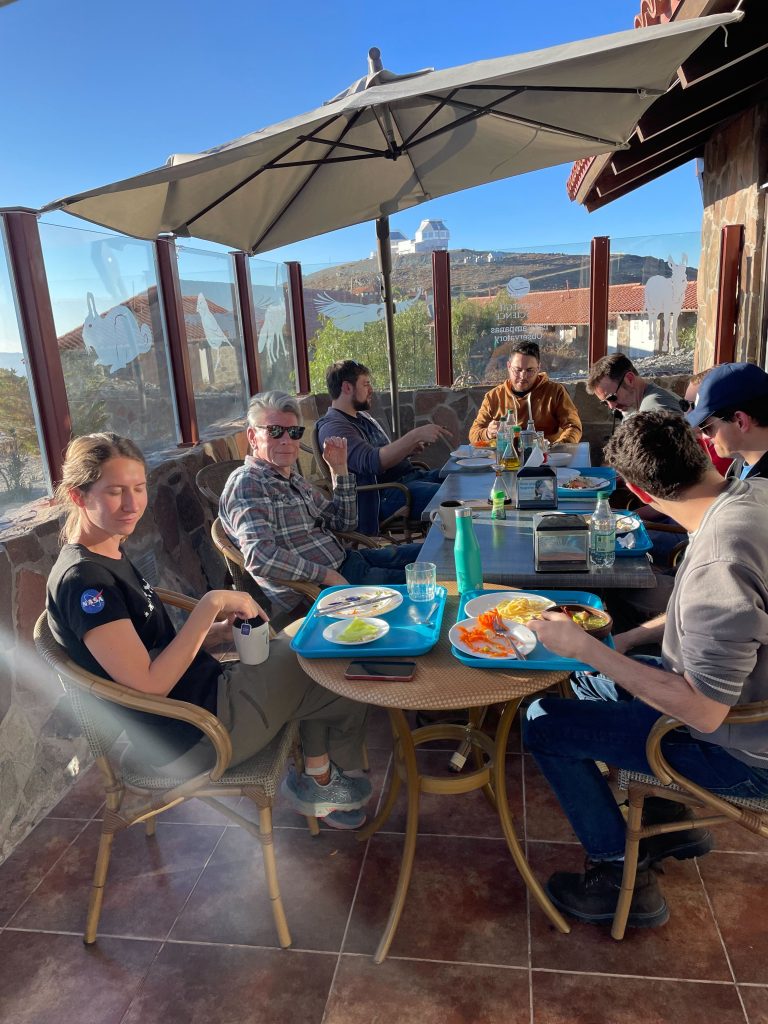
Dinner was quick, and we all raced back up the mountain to finish the last little bits. Since it’s our observing night, we finally got to claim the observer-reserved speedy red automatic. Now that all our cars aren’t manual, we aren’t limited by who can drive stick. Happy to report that no one even screamed as I took my first drive up the mountain!
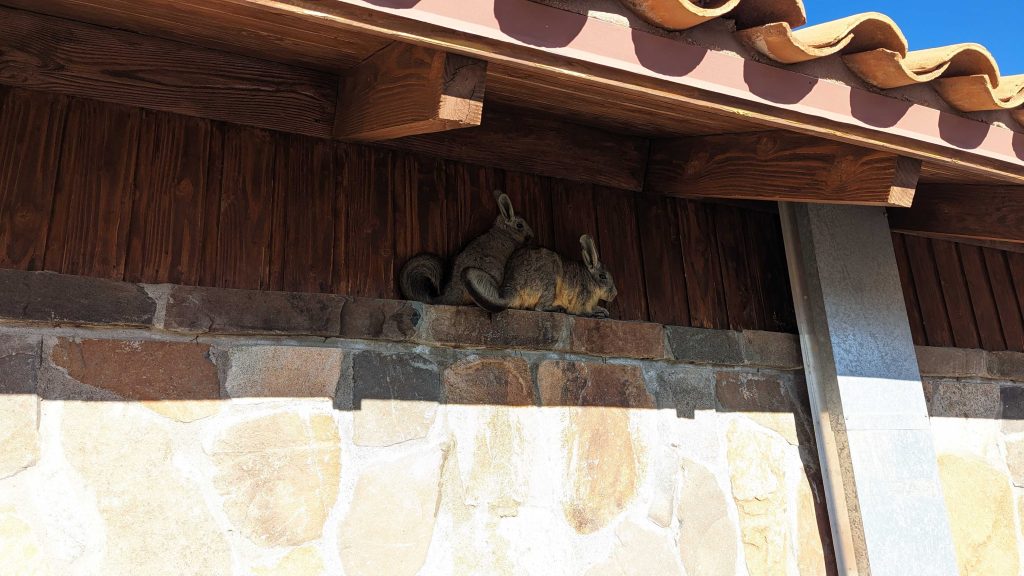
The final mad dash of cabling and clean up wasn’t captured, but rest easy, we once again worked a small miracle and got the instrument science ready on the platform. We even got our first sunset picture on the catwalk with nearly the whole team.
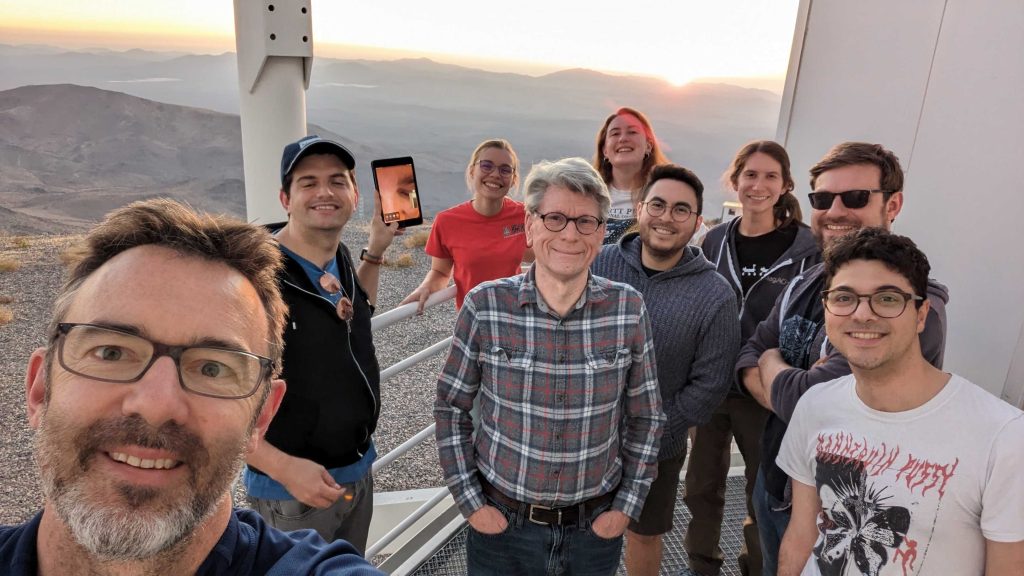
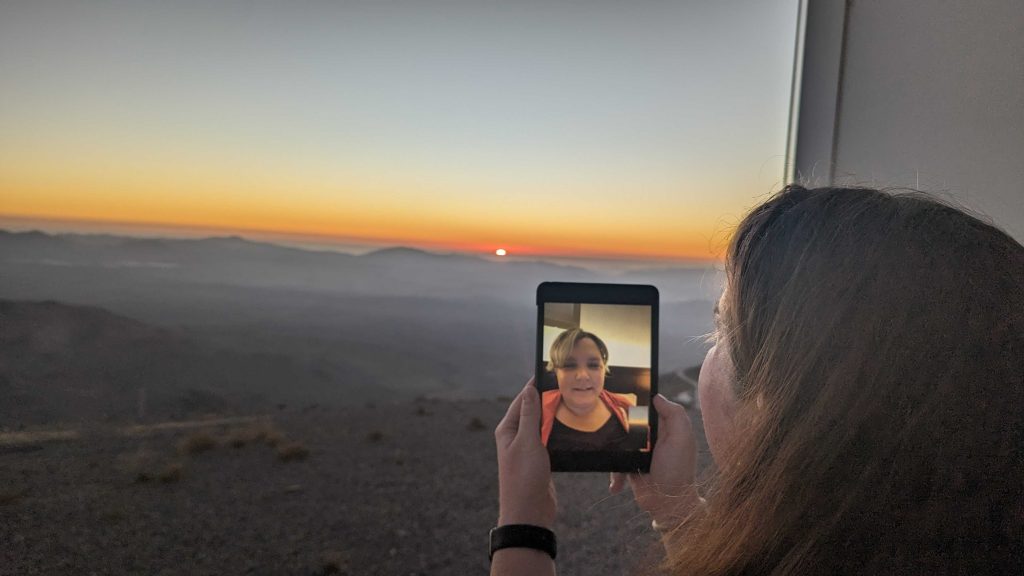
Once the sun went down, we finally got to an open dome and down to science.
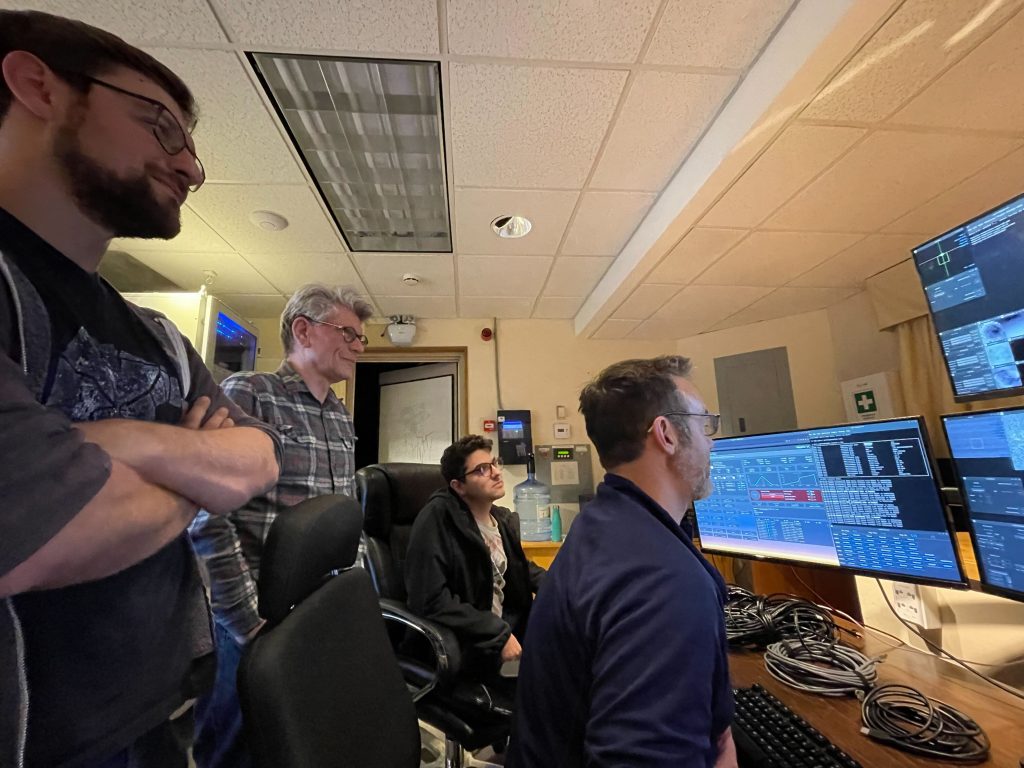
First up was commissioning some of the newest of our DM technology. These alignment patterns were made fairly recently by members of the lab to test our DM actuators on the light from the pupil.
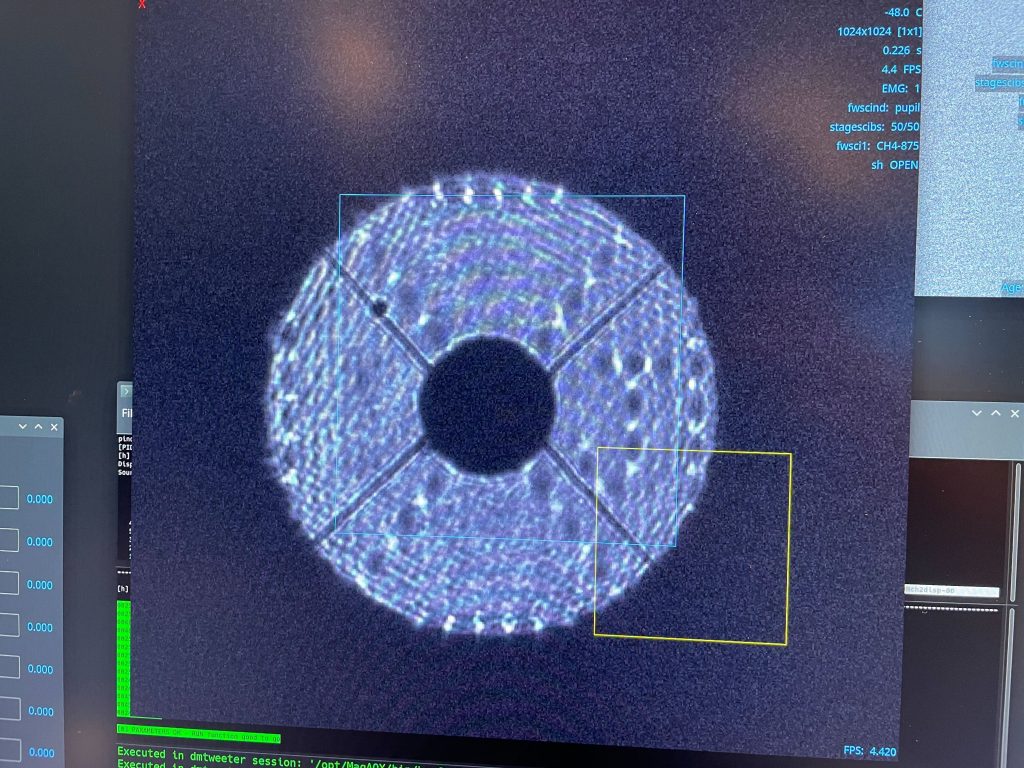
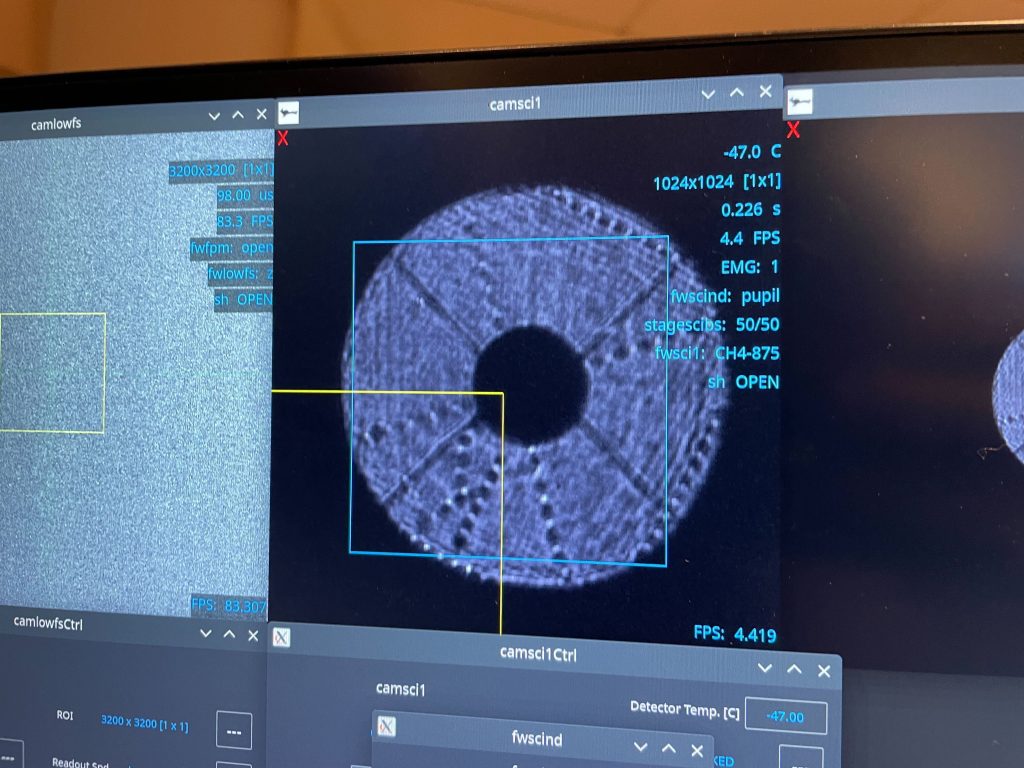
After making sure everything was working, we returned to our old friend, pi Pup. This bright double star system is one of our favorites because it’s companion is bright enough to be seen as soon as we close the AO loop.
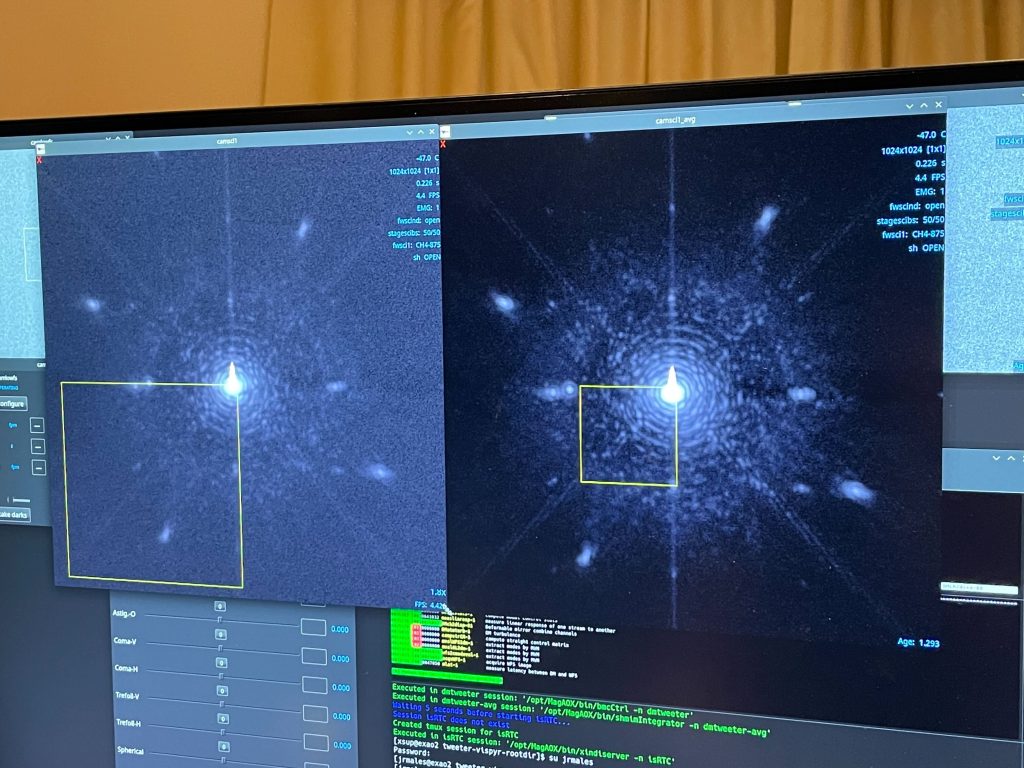
We were lucky that in our first hours of engineering, we got solid and steady 0.5 arcsecond seeing. We were able to capture some great footage of MagAO-X in action. Below, you can see in real time how turning on the AO system gets us from a blob to a stellar PSF.
In another commissioning victory, we got FDPR working on sky with the NCPC DM. This technique probes phase and amplitude with defocus to reduce our non-common path errors. With our first round of testing, we were able to improve our SR from 0.77 to 0.86 with our rough calculations. (In case these numbers mean nothing to you, we were very pleased with our 0.63 last time, 0.77 got Jared smiling, and 0.86 nearly knocked our stinky socks off.)
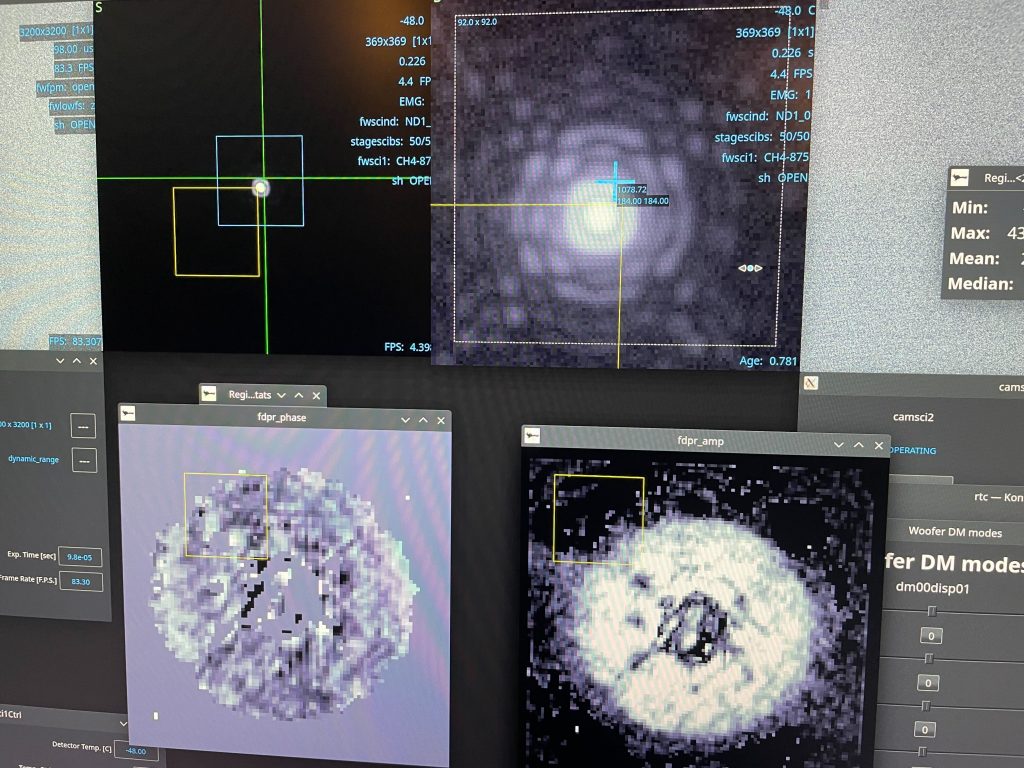
And with those victories, it was on to science. Katie got an hour or so to test ADC algorithms with Sebastiaan, and Jared tested some binning code. Both projects need a little more debugging time, and so we’ll probably revisit them later this week. We got back on sky for Sebastiaan’s target just in time for the seeing to explode.

Sadly, this weather isn’t the kind our instrument was made to operate in, so in the late hours of our very long day, we gave up on scince targets and I got to sneak in a few more engineering tests. (Things have to be pretty hopeless for the team to let me test optical gain unchecked.) The team trickled down the mountain in twos and threes as we finally ran out of steam from our very big, very hard, way too long day.
But don’t let the ending spoil the fact that we just managed a miracle. We got from a truck to a beautiful, record breaking PSF in less than 24 hours. We have only had one night, and are already proving the robustness of algorithms that we weren’t even sure were going to work on sky. Plus, two new group members, Josh and Katie, survived one of the hardest days we go through. Congratulations team!
Song of the day:
How could I not pick this song for the first night of the run?
